Presidential Innovation Award for Environmental Educators (PIAEE) 2020 and Earlier Winners
Each year, EPA recognizes national winners of the Presidential Innovation Award for Environmental Educators (PIAEE).
Winners by year: 2024 | 2023 | 2022 | 2021 | 2020 and earlier
On this page:
2020 Winners
EPA Region 1
Melanie Cutler, Andover High School
Andover, Massachusetts
Ms. Cutler is a global environmental thinker who acts on a local level. As the chair of Andover's Green Advisory Board, she is always seeking to provide opportunities for her students to practice civic engagement to protect the environment.
As a teacher with 22 years of experience in environmental education program development, Ms. Cutler uses a unique curriculum to empower her students to protect the environment and tackle sustainability challenges. Students in Ms. Cutler's classes participate in hands-on learning projects such as sustainable gardening where they grow produce for their school cafeteria and local food pantries.
Ms. Cutler works with local mentors to provide her students' opportunities to improve recycling and compost efforts at nine (9) schools, and to support the banning of plastic bags and Styrofoam within their community. Her students even help to encourage the purchase of renewable energy for schools, including their own Andover High School.
Students seeking a transformative leadership experience can take Ms. Cutler's Environmental Sustainability Internship course. This course provides students with the opportunity to discover a local challenge and then work with local officials, community members, and outside organizations to propose and create a solution. In Ms. Cutler's Environmental Sustainability Internship course, students can conserve land, protect biodiversity, build trails, reduce water pollution, reduce waste, and reduce their town's reliance on fossil fuels.
EPA Region 2
Veronica Morabito-Weeks, Bretton Woods Elementary School
Hauppauge, New York
Ms. Morabito-Weeks, a fifth (5th) grade teacher in Hauppauge, NY, integrates environmental concepts into other classroom subjects including: English, language arts, social studies, and math to ensure all her students experience nature firsthand. Veronica Morabito-Weeks utilizes her 26 years of teaching experience to create inclusive, rich experiences that meet the diverse needs of her students. Her students gain firsthand experience interacting with nature by studying and caring for animals including axolotls, chinchillas, trout, Bobwhite quails, and horseshoe crabs.
She offers students the opportunity to work with environmental professionals, hoping it may spark student interest in stewardship projects. Building on the classroom experience, students can work with staff from Cornell University to release the trout they've raised and study invasive fish species through river sampling after school. Further, in collaboration with Caleb Smith State Park, the students hatch and raise quails to support a tick reduction program in the park.
The entire school community benefits from her environmental leadership. Students benefit from Ms. Morabito-Weeks' initiative in creating a butterfly garden, a native plant garden, and the Environmental Science Club. Every year Ms. Morabito-Weeks organizes multiple environmental education field trips for the entire fifth grade. As a New York State Master Teacher and a Lead Teacher for her Teacher's College Language Arts Program, she provides professional development for other educators and takes part in continued citizen science opportunities to bring new projects back to her school.
EPA Region 3
Ann Strozyk, Howard County Public Schools (HCPSS)
Howard County, Maryland
Ms. Strozyk works with over eight thousand students annually in her role as an HCPSS Environmental Educator. Her goal with all educational experiences is to make them interactive and meaningful. This love of science and her students is what inspired Ms. Strozyk to create the Watershed Report Card (WRC) program. For each ninth (9th) grade earth science and biology class within her county, she was able to organize field experiences where students visiting their closest stream could collect watershed health data. With the assistance of watershed volunteers, students collected data on chemicals, such as dissolved oxygen, pH, nitrate, and phosphate.
Ms. Strozyk created the Watershed Report Card program five (5) years ago, during a time where only a handful of high schools participated. The Watershed program provides students with unique field experiences and has now grown to include every Howard County High School. Ms. Strozyk also provides teachers with detailed lesson plans and professional development. In addition to the field experience monitoring water quality and collecting data on macroinvertebrates, Ms. Strozyk has included an advocacy component to the lessons. She teaches students how to advocate for change and provides them with an opportunity to present findings and suggestions to elected officials at the Howard County Watershed Summit.
Ms. Strozyk continues to ensure that the Watershed Report Card program meets the requirements of the Maryland State Environmental Literacy standards. She also helps each school implement an action project that focuses on protecting the Chesapeake Bay watershed. She knows that teachers' time and resources are stretched thin, so she works hard to help teachers and students carry out their action projects.
Examples of her assistance includes:
- Facilitating meetings and professional development sessions for teachers
- Coming into the classrooms to assist teacher and work directly with students
- Working with government officials to obtain materials, such as stencils, so that students can stencil storm drains on their school campus, as well as provide gloves for a school yard cleanup
- Finding grant money for schools to obtain funding for action project materials such as planting native plant gardens
EPA Region 4
No 2020 winners.
EPA Region 5
David Murduck, Champion Middle School
Warren, Ohio
Mr. Murduck is a fifth (5th) grade science teacher at Champion Middle School in Warren, Ohio, where he strives to instill a passion for environmental stewardship with students and teachers, as well as the wider school district and local community. By incorporating place-based learning strategies that expose students to experiential learning opportunities, his students practice math and other subjects while developing a deep understanding of the importance of stewardship and the environment. In 2019, Mr. Murduck was recognized as both the Ohio Formal Environmental Educator of the Year and the North American Association of Environmental Education Teacher of the Year.
In David Murduck's fifth (5th) grade classroom, he provides active learning opportunities for his students. These opportunities establish an engaging atmosphere where unique, fun, and exciting connections pair with lesson content and life outside classroom walls. Nearly every day, his students are exposed to real-world scenarios which involve observation, hands-on collection of data, and synthesis of information. These opportunities provide real-life, problem-based learning for his students; to develop leadership and reasoning skills; and encourage confidence in Mr. Murduck's young students.
His initiatives expose students, members of their families, and the local community to real-world experiences that help break down barriers and generate curiosity about the surrounding environment. The success of the after-school programs he coordinates and advises have led to a school and community with greater awareness of environmental stewardship and instilled pride in the students. Mr. Murduck's attention to active learning opportunities enables his students to make connections and exchange ideas as they collaborate with peers and develop valuable team building and communication skills.
His accomplishments include initiating recycling programs within the school, fostering exciting "Green Weeks" school activities, taking students on sustainability trips around the country, starting a beekeeping club that serves the entire county, and designing wetlands projects to restore flora and fauna after construction projects. In his spare time, David volunteers with the Friends of Trumball County Metroparks, serves as an advisor to Hiram College for students pursuing science teaching careers, and is a mentor teacher for the Inland Seas Education Association.
EPA Region 6
No 2020 winners.
EPA Region 7
Rachael Arens, Omaha Northwest High Magnet School
Omaha, Nebraska
As a science teacher with more than six (6) years of experience, Ms. Arens creatively uses the context of environmental education to embolden and empower all of her students. She values hands-on and place-based learning in a way that, much like the butterflies in her garden, Ms. Arens' students transform during the year. Through a curriculum that engages students in youth participatory action research and service-learning trips abroad, Rachael Arens' students transform from passively absorbing knowledge to becoming active global citizens. Her approach often results in students engaging in leadership roles advocating for the environment.
Her cross-functional instruction goes far beyond the typical environmental science curriculum, frequently incorporating other subjects. This year, her students are engaging in the civic process by reaching out to their state senator to co-write a "plastic fee" legislative bill for the state of Nebraska. In past years, Ms. Arens and her students built aquaponics systems to learn about sustainable urban agriculture, built Native American and community gardens to address the lack of fresh produce in Northern Omaha, and made Omaha Northwest High Magnet School the first high school in the Omaha-Metro area to implement a school-wide composting program.
Through her efforts, Ms. Arens' students and Omaha Northwest High Magnet School have received several prominent recognitions including the Green Ribbon School Award, the Samsung Solve for Tomorrow award, and National Geographic's Next Generation Environmental Leaders designation. Between these awards and her innate ability to skillfully encourage her students' ideas to germinate and grow, Ms. Arens is successfully cultivating the next generation of environmental changemakers.
EPA Region 8
Spencer Cody, Edmunds Central School District
Roscoe, South Dakota
For the last 14 years, Mr. Cody has brought innovative teaching approaches to environmental education for students in seventh (7th) to twelfth (12th) grade. As a result of his hand-on, research-based, place-based approach to environmental education, the school district has seen dramatic shifts in academic achievement and interest in science, technology, engineering and math (STEM) careers. In 2019, Mr. Cody was named a Sanford Teacher Awardee for demonstrating high levels of inspirational teaching practices which engage students and build student confidence.
Mr. Cody's place-based approach to education for environmental science is a key aspect of his teaching style. This is especially impactful since most of his students do not have access to experiences beyond what is locally available. For example, he took a group of science students to a NOAA lab in Pascagoula, Mississippi, to work with scientists collecting data on marine life in the Pascagoula Bay. Another group of science students went on a field trip to the Monterey Bay Aquarium to work with intertidal and kelp forest specialists. These students also spent a day in the Salinas Valley to see and understand the environmental challenges that farmers face, including using innovative organic farming practices to decrease the dependence on chemical applications. These experiences allowed the students to see scientists at work and encouraged those students to consider careers in STEM subjects.
EPA Region 9
Sabrina Suluai-Mahuka, Samonana High School
Pago Pago, American Samoa
Samonana High School teacher Ms. Suluai-Mahuka has expanded the scope of environmental education for her students from classroom learning to real-world environmental stewardship projects in American Samoa. "As Pacific Islanders," Ms. Suluai-Mahuka says, "our people's living stems from the ocean and the land. We are extremely vulnerable to pollution and climate change. These issues directly affect the students' future."
Ms. Suluai-Mahuka brings in representatives from environmental agencies to talk to students about professional application of environmental issues such as environmental missions and day-to-day work of environmental professionals. Further, she assists her students in planning projects and taking actions to address environmental challenges both as individuals and as a class. For example, Ms. Suluai-Mahuka had her students collaborate to produce short videos, radio ads and informercials on issues like plastic pollution, air pollution, soil erosion and coral bleaching. The students produced scripts and created videos, which were submitted to the American Samoa Environmental Protection Agency (ASEPA) for use as media clips in outreach to schools.
Sabrina Suluai-Mahuka is committed to exposing students to activities beyond classroom, taking her classes to scholarship presentations, marine wildlife summits, and career fairs. Student-planned field trips have included coast and watershed cleanups in which students pick up thousands of pieces of litter and use an ASEPA protocol to quantify it. A tree-planting field trip involved planting trees on a long stretch of treeless beach.
"These lessons and outdoor activities," Ms. Suluai-Mahuka says, "give the students a firsthand account of the effects pollution has on our land and ocean, empowering them with the knowledge that it is our job to make a change by being the change."
Ms. Suluai-Mahuka's students have started to see the merit of green living choices, like using reusable items instead of single-use plastics. She facilitates opportunities for her students to educate middle school classes about these issues. Building on this, she founded a youth community service program, Finafinau (Samoan for "resilience and steadfastness"), to promote awareness of the importance of ocean health and encourage island communities to reduce waste and litter. By sharing her work at teachers' conferences, Ms. Suluai-Mahuka hopes to provide the spark to make this happen across the Pacific.
EPA Region 10
No 2020 winners.
2020 PIAEE Honorable Mentions
Carly Imhoff, Ashford School
Ashford, Connecticut
Ms. Imhoff delivers highly engaging instruction to her students. In her classroom, students learn environmental education and engineering practices in a manner that connects her lessons to global challenges. Many of her students have never been to a city or travelled far from their area; therefore, she strives to provide environmental education opportunities for her students to collaborate with students of other cultures.
Carly Imhoff collaborates with the Parent Teacher Organization to arrange monthly assemblies focusing on different cultures, which have increased student interest in global awareness. Working with a colleague, she initiated a Model United Nations club. Recently, Ms. Imhoff's school was one of ten (10) in the country to be an Empathy Project Certified School that will participate in virtual exchanges with partner schools around the world.
Ms. Imhoff led the Ashford School science teachers in acquiring a grant to build a greenhouse and creating a hands-on learning experience for the students in the greenhouse, through a curriculum that aligns with Next Generation Science Standards.
She has even found ways to engage her students with research happening in space. For example, Ms. Imhoff and a colleague guide the technology and science departments to achieve incredible feats like communicating live with an astronaut on the International Space Station. In a separate but related endeavor, Ms. Imhoff and her colleague also fostered the opportunity for a student-designed experiment to travel on the International Space Station. Their winning investigation, Beet Seed Germination in Zero Gravity, was sent up to space!
Melissa Tracy, Odyssey Charter School
Wilmington, Delaware
Ms. Tracy teaches all grade levels at Odyssey Charter School and draws upon her years of teaching experience to implement a unique hands-on approach to using the school garden as a learning tool for her students.
Through the school garden, she shares her passion for environmental education by using food to help students explore sustainability challenges. Throughout a school year, she utilizes the garden to educate nearly 2,000 students from kindergarten to the twelfth grade.
Melissa Tracy engages students in hands-on gardening activities through the Healthy Kids for Healthy Foods program, Education Cultivation. She teaches a unique, innovative interdisciplinary Food Studies course to her high school students, which examines why food matters and how we can act to support a healthier food system. In only a few years, with Ms. Tracy's leadership, the Odyssey Charter School garden is on track to become one of the most extensive school gardens in Delaware. Ms. Tracy's approach to gardening has helped students study different types of gardening including vertical, aeroponic, hydroponic, aquaponic, and raised beds.
Her school garden donates crops to the Salvation Army, the Brandywine Food Closet, and St. Michael's in the City of Wilmington, totaling over 1,000 pounds of donations. This project demonstrates to students how they can make a positive social impact in their communities.
Ms. Tracy is constantly seeking opportunities to instill in her students a sense of ownership in protecting the planet. In addition to tending to the school's garden, her students learn about the detrimental effects of plastics on sea animals. The plastic bag collection campaign she began at her school led to the collection of over 450 pounds of plastic bags.
Shelly Sparrow, Twin Branch Elementary School
Mishawaka, Indiana
Ms. Sparrow's number one tool in the classroom is excitement. She uses her student's natural curiosity about the planet to teach outdoor environmental education lessons. Her students explore the ecosystem and observe the life cycles of chickens and butterflies to stimulate their sense of discovery. Ms. Sparrow's students grow butterfly gardens to provide a habitat for the monarch butterfly. They also learn about how extreme weather can destroy the monarch butterflies' habitat.
Shelly Sparrow captures her student's attention by encouraging them to use a scientist notebook to record their observations from outdoor explorations. The scientist notebook also serves at the starting point for her student's literacy lessons in a fun way. Her students are happy to learn that the scientist notebook replaces the traditional textbook in Shelly's class. Ms. Sparrow focuses her attention to her students' hands-on learning experience and not on a textbook, which helps her students to develop a love for learning. Her inquiry-based lessons promote literacy, by sparking her students' interest in reading books, to gain a greater understanding of their hands-on lessons and experiences.
As a result, her students build confidence in their abilities to go beyond the classroom lesson to learn and explore books on their own. Her students gain a real passion for reading because of her teaching style, which translates to better test scores and grades. Shelly is also a champion for Science Technology Math and Engineering (STEM). She provides professional development for teachers on "STEM Saturdays" and writes grants to receive funding to support STEM curriculum and equitable STEM resources for students at her school. Her team is using the $150,000.00 of grant funding they won to support STEM education and to deliver lessons through a mobile STEM lab.
2019 Winners
EPA Region 1
No 2019 winners.
EPA Region 2
Aaron Baker, High Point Regional High School
Sussex, New Jersey
As a teacher with 20 years of experience, Aaron Baker has developed a unique environmental high school curriculum that challenges his students to recognize how their actions affect the environment and inspires them to pursue environmentally sustainable changes at High Point Regional High School and in the larger community. Students in Aaron's classes participate in hands-on, inquiry-based projects, activities, labs, and field experiences. They learn about renewable energy sources, waste management, and greenhouse gases by building their own biogas generators using bottles, balloons, and goat and llama manure. The biogas produced is used to fuel Bunsen burners that the students use to cook marshmallows for s'mores. They also build solar ovens that cook meals to explore the science of passive solar energy.
Students explore the topics of water pollution, water-borne disease, and water purification by building a variety of water purification systems that are later tested to determine their filtration efficacies via bacterial culturing before and after filtration and disinfection. Field excursions are conducted in the forest surrounding their school to sample and assess pollution levels in the stream; sample tree density and distribution; and evaluate air pollution by examining the abundance and distribution of lichen. Students help organize a STEM Activity Fair for elementary students and their families and participate in a riparian restoration program developed in collaboration with the Wallkill River Watershed Management Group. Trees are planted along the local Papakating Creek to mitigate the effects of deforestation and to combat the presence of the invasive Reed Canary Grass.
Aaron continues to incorporate sustainability lessons into his classes and his students are currently developing a food waste diversion program at their school and are coordinating with a local pig farmer to develop a plan for cafeteria food waste to
go to the farm instead of to a landfill.
AnnMarie Mills, Islip Middle School
Islip, New York
As an 8th grade environmental education teacher at Islip Middle School with more than 17 years of experience, AnnMarie Mills uses a unique hands-on approach to engage and inspire her students. AnnMarie's students are introduced to her "Outdoor Nature Centered Classroom" where they learn about relatable local environmental issues by investigating the Lake Athasca ecosystem located on their school's grounds. As part of the curriculum, students use scientific skills and participate in several hands-on lessons to investigate the lake's ecosystem. Lessons incorporate the use of scientific equipment including waders, dip nets, seining nets, plankton town nets, water quality testing kits, binoculars, magnifying glasses, dichotomous keys, rulers, and digital microscopes.
Students use these tools to collect information on the lake's water quality, biodiversity index, and to perform a macroinvertebrate survey. Living organisms that the students collect include fish, tadpoles, eels, snails, clams, and plants that are brought into the classroom for further study in a lesson on life cycles. Using their scientific investigation skills and understanding of how delicate their lake's ecosystem is, AnnMarie's students explore the potential for the occurrence of a fish kill through a series of laboratory experiments that examine the effects of nitrogen-based fertilizers on water quality.
In partnership with Molloy College's Crab Club, AnnMarie's students also study the native horseshoe crab in their Ecology Unit. Live horseshoe crabs are kept in a tank in the classroom and serve as the basis for hands-on exploration to demonstrate the interconnection of the horseshoe crab to other local wildlife and population.
EPA Region 3
Brittany Bauer
Wyoming County East High School New Richmond, West Virginia
During her 8-1/2 years as an educator, Brittany Bauer has been working to create a learning environment at Wyoming County East High School that engages and inspires her 10th through 12th grade students to become active environmental stewards. Brittany's students participate in classroom and field projects that focus on addressing local environmental issues, including assessing the health of the Guyandotte River by collecting water samples and data on macroinvertebrates, evaluating their personal consumption and waste generation to identify ways to reduce littering in their community, and cleaning up 26.2 miles of roadside and streams.
Brittany also facilitated the development of a student-run recycling program with the school's Friends of the Earth Club. Students organized school-wide recycling pep-rallies, created a commercial, developed educational presentations, created a recycling rap, and worked with other schools, local businesses and members of the community to expand the collection program. Community members bring their recyclable materials to the school for sorting and weighing and proceeds from the aluminum recycling are used to fund Environmental Steward Scholarships.
Students in Brittany's classroom also learn about the value of biodiversity in the Appalachia region by participating in hikes with naturalists to identify local medicinal plants, keystone species, symbiotic relationships, and the effects of invasive species.
Brittany's dedication to environmental education has earned state and national recognition, including the Environmental Award for Community and Education from the West Virginia Department of Environmental Protection (WV DEP). Through her efforts, her students have also received several recognitions, such as the Youth Environmental Protection Rhododendron Award for Environmental Impact and the 2018 WV DEP Youth Environmental Hall of Fame Award. The Friends of the Earth recycling program also placed first in two categories during the 2018 Pepsi Recycling Rally Action competition.
Jared Fritzinger, Old Donation School
Virginia Beach, Virginia
For the past 8 years, Jared Fritzinger has taught Civics and Economics classes to academically gifted 8th grade students. Six years ago, Jared collaborated with his Earth Science colleagues to develop a curriculum that incorporated key citizenship and service-learning concepts with a focus on environmental sustainability. This led to the creation of the Capstone Project, a service learning, student-centered, interdisciplinary sustainability program that helps connect students to real-world experiences.
During the Capstone Project, students work in groups to identify a need in the local community and then identify how to address that need. Students must incorporate and adhere to the Three Pillars of Sustainability (economic development, social development, and environmental protection). As part of the 2018 Capstone Project, Jared's students developed the Capstone EcoBus in which students identified the need to collaborate with elementary school teachers in 2nd through 5th grades to help them incorporate sustainability practices into their science curriculum. Working together, the students proposed the concept of a mobile sustainability classroom housed in a decommissioned school bus. Jared's students were intrinsically involved in every step of the project, including planning, fundraising, financing, design, and construction.
Past student Capstone Projects have addressed healthy school environments, environmentally friendly agriculture practices, human contributions to ocean litter, school gardens, recycling, and STEM education. In the 6 years since the program's inception, students have built community gardens, worked to have their school courtyard designated as an official schoolyard habitat, built bat houses and hummingbird feeders, planted pollinator gardens, utilized discarded Christmas trees to shore up sand dunes against erosion, woven mats and blankets for homeless people utilizing yarn made from recycled plastic bags, lobbied the Virginia House of Delegates to ban balloon releases within the state borders, designed rain barrels that operate automatically based on the moisture readings of soil sensors, created wind turbines for automobiles that charge interior electrical components, and collected 1,500 discarded cellular telephones for recycling.
EPA Region 4
Carrie Settles Livers, Brookwood High School
Snellville, Georgia
Carrie Settles Livers, a science teacher at Brookwood High School, believes that students best engage in learning when curriculum is applicable to real-world experiences. Students in Carrie's Natural Resource Management course participate in experiential learning opportunities including maintaining and troubleshooting the classroom's two aquaponics lab systems and using engineering and design principles to build their own mini-aquaponics systems. During the aquaponics project, Carrie's students learn about the importance of sustainable farming practices and how agricultural farming using scientific concepts of genetics, botany, physics, and environmental engineering can help tackle issues that contribute to food deserts in their community.
Carrie has formed local community partnerships to bring environmental businesses into the classroom as guest speakers. Guest speakers have included the National Sales Director from Organic Valley Farms who spoke about his show company's sustainable business model; the Chief Executive Officer of Hatponics, Inc., who shared his startup story; a representative from the University of Georgia's extension center who delivered a lesson on fall gardening; a water consulting firm contracted by the County government who spoke about water conservation; and the City of Snellville's Economic Development Advisor who spoke about his honey bee farm and concerns of colony collapse disorder.
The students' interaction with City officials led to an exciting partnering opportunity that involved collaborating on the creation of a new City Market. Students were charged with preparing and submitting green building designs to the City Council. Three of Carrie's students are serving on a special council that provides feedback during the building of the City Market. This experience empowered her students as they learned about the concepts of urban sprawl, infill, zoning, transportation issues, alternative energy, and urban agriculture.
Nancy Platt, James B. Edwards Elementary School
Mount Pleasant, South Carolina
As a special needs educator with more than 12 years of experience, Nancy Platt encourages her students to explore the natural world through hands-on projects and activities that are relevant to their community. Nancy initially began her career at the high school level and created a student angling club. She was approached by the U.S. Fish and Wildlife Service (USFS) to help tag fish species to track migrations in the local waterways. Nancy and her students also became involved in the Coastal Conservation Association and South Carolina Oyster Restoration and Enhancement (SCORE) Project. As part of the SCORE Project, the school hosted a recycled oyster shell bagging event where two dump truck loads of shells were collected, and the shells were used to build two strategic reefs that targeted erosion areas.
In 2013, Nancy began teaching at the elementary school level where she continued to share her passion for environmental sustainability. Students in 3rd through 5th grade participate in oyster bagging events and learn about the salt marsh estuary environment. Nancy's students also take part in their school's From Seeds to Shoreline Program (FS2S). Students in the school's Green Team harvest and germinate sporobolus that is eventually transplanted to a local Atlantic Sturgeon hatchery. Students also grow crops in garden beds at their school and hold plant fundraisers to raise money for the school's sustainability program. Vegetables, including sweet potatoes, squash, spinach, carrots, beets, kale, collards, lettuce, spring onions, peaks and beans, are harvested from the school garden and are shared with the school's classrooms for healthy tastings. The vegetables also supplement a backpack buddies' program that sends bags of food home with families in need.
Nancy is also involved in her school's ECO club. Students in the ECO club work to address local environmental issues by collecting items for recycling, conducting trash assessments, and overseeing the student body's disposal of lunch waste. Nancy's efforts to improve environmental education at her school have earned her several honors; including the South Carolina Department of Health and Environmental Control's 2015 State Recycling Teacher of the Year, the 2015-2016 James
B. Edwards Teacher of the Year, and through her efforts, her school was awarded the U.S. Environmental Protection Agency's Energy Star Award in 2017. Nancy has also helped raise more than $20,000 for environmentally sustainable activities at her
school through grants, donations, funded projects, and fundraisers.
EPA Region 5
Jennifer Heyer, Cedar Ridge Elementary School
Eden Prairie, Minnesota
Jennifer Heyer is a kindergarten teacher at Cedar Ridge Elementary School with 18 years of experience. Four years ago, Jennifer decided to spend time outside with her class barefoot and was surprised by students who complained they didn't want to touch the grass and get dirty. Determined to connect her students with the outdoors, Jennifer researched methods of outdoor teaching and prepared a science-based outdoor program for her students called, "Wilderness Wednesdays." Over time, Jennifer realized that Wilderness Wednesday's lesson plans began to create themselves as children would go on explorations and ask questions about animals, trees, tracks, and the weather, which were all topics that fell within state standards.
Parents of Jennifer's students have continually supported the science program and the opportunity for learning science in a more personal, authentic way. This motivated Jennifer to develop the Weekend Wilderness Challenge that inspires students' families to spend time outside together each weekend. Since the start of the Wilderness Wednesday program, Jennifer has seen a huge growth in her students academically, socially, emotionally, and physically. Students are eager to learn and are excited to explore their environment.
Jennifer's students also participate in Earth Day cleanups. She has introduced the children to "Trash Bingo," where different types of trash they find translates to an "X" on their bingo card. Students observe the kinds of garbage they collect and make connections about the human contributions to litter and how to prevent it. Jennifer's students also plant gardens with corn, pumpkins, lettuce, sunflowers, and Marigold flowers that help them learn how each plant grows, examining everything from the seeds, root systems, stems, and leaves.
EPA Region 6
Ryan Beeler, Spring Woods High School
Houston, Texas
As a teacher at Spring Woods High School with more than 6 years of experience, Ryan Beeler shares his passion for science with his students by encouraging them to think inquisitively about the world around them. Ryan's curriculum incorporates civic engagement and environmental responsibility concepts by integrating topics, including pollution, recycling, availability of natural resources, and food waste, in a relatable way into his lessons.
Throughout the school year, Ryan's students conduct hands-on laboratory activities and participate in a Socratic Seminar at the end of each unit. To prepare for the seminar, students research an assigned topic and discuss what they have learned and their ideas. Ryan's students actively debate and defend their ideas in an encouraging and safe setting.
During Ryan's Pollution Unit, students learn about their county's contributions to carbon dioxide emissions and about the public health implications. They also learn about the correlation between poverty and pollution. Students research the types of pollutants released, how they are monitored, and perform a hands-on laboratory experiment to measure different air and water pollutants. Ryan's students complete his class with an understanding of how scientists perform research and how pollution affects their lives outside of school.
EPA Region 8
Amy Williams, Polson Middle School
Polson, Montana
As a special education teacher and Indian Education Coordinator with more than 13 years of experience, Amy Williams provides learning opportunities that are hands-on, environmentally diverse, and culturally significant. Students at Polson Middle School, located on the Flathead Indian Reservation, spend time in the school's community garden to learn science, history, traditional agricultural practices, sustainability, and life cycles. School staff and community members also volunteer their time tending to the garden. An annual community Harvest Feast is held to share and celebrate the success of the growing season and to educate families about foods indigenous to North America.
Amy encourages environmentally sustainable growing practices, such as using locally sourced wood for structures, using recycled materials to make traps for trespassing rodents, designing and implementing a low-flow irrigation system pumped from an irrigation canal, utilizing beneficial insects to control pests, using pots made out of recycled newspaper to grow seedlings, and using composting and vermicomposting instead of synthetic fertilizers. Amy has noticed that spending time and working in the school garden has helped several of her students regulate their emotions and behaviors.
Amy and her students also work with their school food service to compost post-lunch line waste. They have composted 1,622 pounds this year. Students are taught how to separate items from trays before disposal and are taught about composting, sustainable harvest of traditional materials, and reusing items to reduce waste.
Amy mentors students in her after-school Environmental Advocates for Global and Local Ecological Sustainability (EAGLES) Club. This year, students in the EAGLES Club are focusing on water conservation issues associated with the Flathead River and Lake. They are learning about plants and animals that depend on the water, the effects of plastics and pollutants on lakes and streams, and how the pollutants impact water quality.
EPA Region 9
Jacqueline Omania, Oxford Elementary School
Berkeley, California
Jacqueline Omania, a teacher of 3rd grade elementary school students with more than 30 years of experience, encourages and inspires her students to think outside the box to solve environmental problems. During the first 15 years of her teaching career, she founded and developed the first Farm and Garden program within the Berkeley Public School system. When Jacqueline transitioned into the classroom setting, she became a community support agriculture (CSA) member so that she could help her students experience the benefits of fresh produce. Twice a month, her class receives boxes of produce from a nearby organic farm that students inspect. On "Raw Day," students eat the produce that can be consumed raw, and the rest of it goes home with a student to be cooked and shared with the class the next day on what is known as "Cooked Day." The CSA activity teaches students about local, organic, plastic-free food, and students write journal entries about their experiences.
Building on the CSA activity, Jacqueline's students learn about the environmental effects of landfill waste with a focus on the detrimental effects of plastic. Resolved to be part of the solution, Jacqueline's students began the Zero Waste Classroom project. Now that students are several years into implementing this project, waste generation has been reduced from five, four-gallon bags of landfill waste the first year to 2 cups of waste on day 132 of the 2018-2019 school year. Students also conducted waste audits to identify which activities in the classroom create the most waste and worked to find alternatives. Students implemented other waste reduction measures such as using unpainted pencils so that the shavings could be composted, forgoing glue sticks and using plastic cereal bowls collected from the school breakfast as dipping bowls for glue and eschewing the use of paper towels in favor of personal hand towels that could be washed and reused.
Jacqueline's students also learn about the beauty and wonder of the world's oceans and the problems associated with plastic pollution. Students collected plastic waste from their homes and made ocean animal art accompanied by an informational artist statement. Some of the art pieces were displayed in Berkeley's city-wide youth art show.
EPA Region 10
Anne McHugh, Franklin High School
Portland, Oregon
Anne McHugh's goal as a science educator at Franklin High School is to stimulate her students' sense of discovery through authentic scientific research. Anne has developed several projects that emphasize the philosophy that scientific discovery is a set of questions that have not yet been answered. Her arachnid biodiversity project is based on research she conducted for her master's degree, where she collected arachnids throughout the Caribbean as part of a biodiversity survey. Anne's students form hypotheses about how arthropod biodiversity relates to a biotic or abiotic factor. Then, they visit their local park to test their hypotheses. Students engineer and construct their study materials, including arthropod sifters to collect their samples. Results from the survey are compared to the theories they learned in class.
Anne's students also take part in a research project that examines the role of microbes in cycling nitrogen in aquaponics systems. Students design and build 10 desktop aquaponics systems and test hypotheses on how macro-level design choices can impact the microbial diversity over time. The results of the project are shared with scientists at NASA, as well as other people interested in aquaponics. In 2017, some of her students presented their results at the National Aquaponics Association Meeting and carried on their microbial diversity research for Science Fair projects in collaboration with scientists at the University of Southern California.
Students also participate in a citizen science project developed in collaboration with NASA's Ames Research Center. These high school students investigate how cyanobacteria have evolved and differentiated in hypersaline environments, and they experiment with how changes in lighting and growth media change the bacteria growth rate. Results from this project contribute to NASA's ongoing research.
2019 PIAEE Honorable Mentions
EPA Region 3
Matthew Sturdivant, Odyssey Charter School
Wilmington, Delaware
Through the Green Team at Odyssey Charter School, Matthew Sturdivant shares his passion for environmental science by using a hands-on approach to help students connect with the school's community. During the school year, students grow crops in the school's eight-bed garden, with each grade responsible for a different step in the growing process. Crops harvested from the garden are donated to local food desert areas in Wilmington, Delaware, where nutritious foods are difficult to obtain. This project demonstrates to students how they can make a positive social impact in their communities.
The school also recently added a chicken coop and six chickens that will be managed by Matthew's environmental science students. In addition, nutrient-rich soil will be prepared for the school's garden through a new classroom vermicomposting project composed of three vermicomposting bins.
In addition to tending to the school's garden, Matthew's students learn about the detrimental effects of human litter in oceans and the effects of plastics on sea animals. Students recently researched ways to reduce plastic container garbage generated by restaurants and wrote letters to state representatives to support a bill proposed in 2019 in Delaware called "Straws by Request Only." Matthew's students also held a school-wide plastic bag recycling event that diverted more than 34,000 plastic bags from the local landfill.
EPA Region 4
Missy Eason, Pine Grove Elementary School
Valdosta, Georgia
As a science teacher with more than 27 years of experience, Missy Eason uses the Project Learning Tree environmental education curriculum to engage her 4th grade students through experiential, place-based learning activities. Missy's students participate in several activities in their community's forestland, including the Web of Life activity where they learn about the interconnectivity of species in the local ecosystem; the Tale of the Sun activity that integrates science, social studies, and reading concepts; and through AG-Day, which has taken place at Missy's family farm since 1998.
During AG-Day, Missy's students learn about sustainable farm management, observe multiple ecosystems, and participate in several hands-on activities. Students develop an understanding of how farms can support communities by producing products that are sustainably managed. Missy engages community experts from local universities to enhance student learning opportunities and helped develop a recycling program at her school that challenges classrooms to collect recyclable materials.
Missy is the recipient of several honors, including the 2012 Pine Grove Elementary Teacher of the Year and the 2015 National Project Learning Tree Outstanding Educator of the Year. She has also served on several local, district, and state committees dedicated to promoting environmental education in the State of Georgia.
Elaine Fiore
Beachside Montessori Village Hollywood, Florida
As a teacher at Beachside Montessori Village with more than 25 years of experience, Elaine Fiore inspires her students in 6th through 8th grade to make individual choices to help the environment and benefit their community. Elaine's students primarily study topics focused on food waste and the effects of plastic ocean pollution on the marine ecosystem.
Elaine's students conducted a class food waste project that started by auditing their school's cafeteria food waste. Students who purchase lunch are required to take three food items per U.S. Department of Agriculture requirements, even if they do not plan on eating all of them. The unused food items were being thrown into the garbage. To demonstrate the magnitude of unopened and unpeeled food items being thrown away, students placed the items on a cart set up in the cafeteria. At the end of the lunch period, students were stunned by the amount of food that was being thrown away, destined for the landfill. This realization motivated students to find a solution that both diverted the food from the landfill and fed hungry students.
After overcoming several hurdles and consulting with the school's Food and Nutrition Services Coordinator, Beachside Montessori Village instituted a food recovery program that made available a share table where students could place unopened and unpeeled food items to feed others. Since the start of their program, Ela ne has led training at more than 50 schools and
has facilitated the start of food recovery programs at 15 additional schools.
EPA Region 6
Allison Adkinson, Tarver-Rendon Elementary School
Burleson, Texas
With over 110 acres of unlimited space at their campus, Allison Adkinson's lessons extend beyond the four walls of a traditional classroom. Her students are able to learn about the importance of the environment, agriculture and sustainable products. Allison stresses to her students the importance of caring for Earth our natural resources, and the importance of gardening and agriculture.
In designing and planning lessons, Allison tailors lessons to include hands on place-based learning that involve using the senses. Discovery Park and gardens have done so well, that Allison has extended the garden to the campus salad bar and beyond. Allison created a new project to take the garden to the community by hosting and running a Farmer's Market. With teacher guidance, students harvest, market, and sell their produce. The market is open to the community with all proceeds from it going directly to purchasing seeds, soil, and planters to keep the garden self-sustaining. This project allows students to see personal finance and economic growth in their own lives. They can take their hard-earned money and put it back into a project that they are passionate about and personally vested in at an early age. Additionally, Allison and her students take any unsold produce to help feed students at summer school, feed first responders and donate to Feed the Kids summer program. Additionally, they are able to reach more people not only in their community, but also in the community their district serves, and their surrounding areas. Allison has shown her students the importance of giving back. This lesson in caring is one they will carry with them years after they leave Tarver Rendon.
Allison's students are now looking beyond their K-12 experience and have started asking about college. Students as young as kindergarten have begun to earn service hours that they will be able to use on their college and scholarship applications. They see this program as a way of helping them to achieve their dreams of launching a college or career pathway.
Isabel Anaya, Charles L. Kuentz, Jr. Elementary School
Helotes, Texas
Over the last 18 years as an elementary school teacher, Isabel Anaya has connected her 5th grade students to the natural world using fun, hands-on, interactive, problem-based learning opportunities that inspires their natural curiosity. Her students learn valuable life lessons by maintaining their school's garden and addressing complex environmental issues. During Isabel's Personal Water Eco-Audit lesson, groups of students focus on the real-world issue of water use, the implications of their water consumption, and the impacts to the environment. As a result of their hard work, four student teams won an Eco-Audit Grant through EcoRise and used the funds to purchase their school's first water bottle filling station.
Isabel's students also learn about waste management. They are implementing a Zero-Waste Campaign at their school, which includes an Upcycling Competition that challenges students to apply the principles of upcycling to build a product out of waste materials. Isabel also engages with her school's community to bring local partners and experts into her classroom to share their expertise on environmental issues. Partners have included the National Wildlife Federation that guided students in the creation of Monarch Hero Butterfly Gardens, the local Solid Waste Management Division to present about the important of recycling, and representatives from the Texas A&M AgriLife Extension Program who have shared their knowledge on composting and vermicomposting. Isabel's approach to environmental education has fostered a learning
environment that encourages her students' creativity and critical thinking.
EPA Region 8
Caitlin Webb, Dixon School
Dixon, Montana
Caitlin Webb is the only middle school science teacher in Dixon, Montana, a small town on the Flathead Indian Reservation. Many of her students face challenges from living in a high poverty, rural area. To meet her students' needs, Caitlin designed an environmental education program using traditional teaching methods along with inquiry-based and culturally responsive lessons that are fun and engaging. Caitlin's students utilize the wonderful resources on their reservation and in their state to conduct place-based learning. Students observe their community's environment and discover how their actions can have a positive effect on the environment, fostering pride in their community.
Caitlin has also worked with the school cook to initiate a Farm-to-School program. The harvest from the school garden is served during the school's summer programs and in the fall of the regular school year. This project allows students to have a better understanding of where their food comes from while also driving home the interconnectedness of their food systems and ecosystems. Additionally, Caitlin is leading an effort for her school to be designated a Bronze-Level Ecoschool through the EcoSchools USA program. The process to achieve this designation includes implementing a student-led community action project; auditing the school grounds to look for appropriate wildlife habitats, green space, and water use; and forming a student Eco Club with the purpose of driving ecology-based and environmental actions at the school such as recycling and water conservation.
Caitlin teaches both Montana and U.S. History, which provides a unique opportunity to incorporate Montana's history into her environmental science curriculum. Students learn about the historical and environmental effects of gold and copper mining in Northwestern Montana, by examining topics of heavy metals contamination in the Clark Fork River.
EPA Region 9
Rachna Nath, Arizona College Preparatory - Erie
Chandler, Arizona
Since she began teaching at Arizona College Preparatory – Erie, Rachna Nath has been an environmental advocate working to enrich her students' critical thinking and problem-solving skills through use of research-based, place-based, and claim- evidence and reasoning methods. Rachna's science curriculum, which she calls 'Dream Research Innovate and Project- based Learning' (DRIPbL), challenges students to solve real-world environmental problems by conducting research-based experiments. Rachna incorporates unique strategies to engage her students, including limiting class rules to foster an open environment for student and teacher interaction; creating innovative ways for students to share their knowledge with peers, such as writing poetry, songs, and podcasts; participating in hands-on activities; and participating in field trips.
Rachna's students are working with the Arizona Department of Environmental Protection to increase awareness about volatile organic compounds (VOCs) and to develop a reusable, organic, VOC-free air freshener. They also organize e-waste collection events and are developing an anti-swarming bee agent using household herbs and spices. They are building a sustainable hydroponics garden using milk cartons from the school's cafeteria and an outdoor sustainable garden on the school's campus.
Rachna is continually seeking sponsors and funding for her students' environmental sustainability projects. She has secured several grants, including the Society for Science research grant and a Flinn Foundation grant to develop a biophysics pipeline to Arizona a State University.
Kelly Porter, Edison High School
Huntington Beach, California
Kelly Porter, a teacher at Edison High School with 7 years of experience, believes that personal experiences and place-based, experiential learning are keys to a successful environmental education curriculum. Students in Kelly's class participate in genetics labs that study the wing mutations of reddish egrets, a species found in local Huntington Beach wetlands. Over the course of eight months, her Advanced Placement (AP) students choose an environmental topic, design a research experiment, collect and analyze their data, and write a scientific paper to present and share their findings with classmates. During their projects, students collaborate with a local wetland-focused non-profit, local medical clinics, other teachers,
and other schools in the area.
Another one of Kelly's particularly successful projects at Edison High School was accomplished in the "Introduction to Sustainability" course. Students researched local plant species and habitats, designed habitats, and installed their new native habitats in planters. The native habitats are maintained by students with moderate to severe disabilities as part of their science program.
Kelly continually adapts her environmental education curriculum to reflect community issues and prioritizes, the interests of her students, and addresses other hot topics and questions. For example, during a discussion on climate change, when a student asked questions about wildfires, Kelly used it as an opportunity to develop an activity to analyze wildfire patterns in California. After the Paradise fire, the activity evolved into weeks of activities that explored the effects of climate change and how students could make positive environmental changes.
2018 Winners
EPA Region 1
Christine Brothers, Falmouth High School
Falmouth, Massachusetts
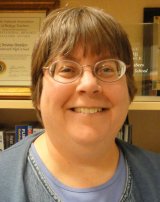
After working at three different nature centers as a naturalist and educator for 10 years, Christine Brothers became a science teacher at Falmouth High School, where she has taught various science classes since 1995. Four years ago, she developed a new Advanced Placement Environmental Science (APES) course at the school, for which she conducted research, prepared curricula, and obtained $10,000 in grant funding to purchase lab equipment and teaching supplies to support experiential learning.
Leveraging experience gained during a trip to Brazil as part of a Research Experience for Teachers grant funded by the National Science Foundation, Christine developed a “Carbon Cycle and Climate Change” project at Falmouth High School that she uses as part of her APES curriculum. The project replicates research techniques she learned in Brazil. Students conduct field work in the forest behind the school to measure tree circumference and height, identify species, take tree core samples and weather measurements, use various hand-held instruments, and collect soil samples for later analysis in the lab.
Her students also participate in a Watershed Assessment field trip that traces the course of a river from its origin to the ocean. Students take water samples and later conduct lab tests to calculate a water quality index. During the field trip, students interact with scientists and environmental professionals who demonstrate how to conduct environmental research and serve as career role models. Students participate in another field trip to tour the town water treatment and wastewater treatment plants, where they learn about water resources, energy, and pollution. The field trip also includes a tour of the Southeastern Massachusetts Resource Recovery Facility trash burning power plant, where students learn about solid waste issues, energy generation, and air pollution emissions.
Christine also advises the Falmouth High School Ecology Club, which extends her environmental education work beyond the classroom. The club’s members engage in service activities and promote environmental conservation in the community. Each year, the club chooses a cause, such as arctic wildlife, rainforests, coral reefs, or endangered primates, and then holds fundraisers throughout the year to support the cause. Each spring for Earth Day, club members visit one of the local elementary schools to present the cause to 3rd grade students, using presentations, displays, and activities or games. Continually searching for ways to creatively engage her classes, Christine hopes to inspire her students to pursue a career in environmental science or environmental education.
EPA Region 2
No 2018 winners.
EPA Region 3
No 2018 winners.
EPA Region 4
Timothy Chase, Bluffton High School
Bluffton, South Carolina
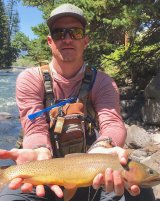
As a science teacher at Bluffton High School, Timothy Chase actively seeks opportunities to take his students outside and create outdoor classrooms to enhance their learning. When he started at Bluffton in 2012, he began working on an outdoor classroom known as the SOIL Project (Sustainable Outdoor Inquiry Learning), a sustainable, organic demonstration food garden that composts cafeteria waste, harvests rainwater, and uses raised beds made from reclaimed shipping pallets.
- allow students to explore environmental issues outside whenever possible,
- empower students to explore solutions to environmental issues in their own community, and
- inspire them to engage in community service related to those issues.
Recognizing that he is often not the subject matter expert on every environmental topic, Timothy often brings in local experts to meet with students, such as having a refuge manager and aquatic biologist from the Savannah National Wildlife Refuge help his Advanced Placement Environmental Science Students perform a fish survey and population study at the school retention pond.
Timothy also extends his environmental ethic and influence on the rest of the student body by sponsoring an environmental club at the school. In the past, the club has built rain barrels, raised beds for the organic vegetable garden, and a compost center that produces fertilizer for the gardens. The environmental club also organizes community service days with other student groups to participate in environmental projects. He actively reaches out to colleagues at his school to expand the environmental education and literacy curriculum beyond the science classroom, including working with ESOL (English for Speakers of Other Languages) teachers to develop meaningful project-based learning modules with an integrated environmental education theme.
Timothy also leads workshops and professional development sessions to inform other teachers about environmental education strategies and initiatives, and has taught or organized sessions at the Beaufort County School District Summer Institute for several years.
EPA Region 5
Anna Dutke, Jeffers Pond Elementary
Prior Lake, Minnesota

During the 2014-2015 school year, Anna Dutke developed a nature-based preschool option and piloted it for the Circle of Friends Preschool. The pilot was designed to align the preschool with the Prior Lake-Savage Area School district-wide E-STEM initiative (Environmental Education, Science, Technology, Engineering and Math).
E-STEM is an instructional approach that emphasizes inquiry-based and real-world problem-solving by integrating hands-on science, technology, engineering, and mathematical practices with projects and field experiences related to the environment. At the start of the 2015-2016 school year, Anna’s nature-based preschool classroom relocated to Jeffers Pond Elementary, creating new opportunities to bring preschool students together with kindergarten through 5th grade students.
A “buddy class” partnership was formed with the 5th grade, and the preschool and 5th grade students met weekly to engage in activities and lessons that integrate environmental education along with the preschool and 5th grade curriculum and learning standards. In 2017, the students presented a research project about squirrel enrichment (protecting and preserving squirrel habits) at the University of Minnesota’s Ecology Fair, which was notable because the preschool students were the youngest participants in the fair’s history.
In 2015-2016, Anna formed a Family Nature Club with her colleagues that provides free, monthly gatherings for families at one of the school district’s outdoor learning centers, where family members conduct activities that foster and support exploration and nature play.
Anna also co-leads her school’s Junior Naturalist Program that is geared toward 3rd grade through 5th grade students who want to be leaders in environmental education. At the beginning of the school year, students in the program select a focus area (such as waste reduction, schoolyard habitats, or energy conservation), identify challenges or aspects of the focus area in which they may need additional education, and plan and implement activities at the school to address the focus area.
Anna’s students are developing a strong foundation and excitement for learning, increasing their understanding of the impact they have on nature, and developing a sense of responsibility and stewardship. Anna’s efforts have inspired kindergarten teachers across the district to incorporate more nature-based learning into their curricula.
EPA Region 6
No 2018 winners.
EPA Region 7
Morgan Skaith, Carden Park Elementary School
St. Joseph, Missouri
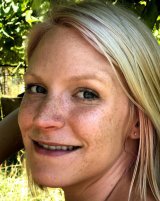
Using a project-based learning approach to prepare lessons, Morgan Skaith provides opportunities for her 3rd grade students to learn about the environment in a unique, fun, and authentic way. Morgan’s students are participating in the redesign of the local Riverfront Park in St. Joseph, Missouri, which is undergoing a revitalization effort. Students met with the City Planner and the Historic Preservation Planner to learn about city planning, development, and zoning, and have met with a landscape architect to discuss the design process. Students are learning about enhancements that could benefit the park, such as adding a historic monument, promoting natural features that support the local ecosystem, and building a play area and a pedestrian path.
Students have taken ownership of specific projects associated with the park’s redesign and have been given the opportunity to pursue interests they discover while supporting those projects. For example, students have learned more about butterflies and their habitats based on the concept and design of a butterfly garden.
Carden Park Elementary School is a Title 1 school with a high population of underprivileged students living in poverty. Through Morgan’s lessons, students are taking ownership of their learning abilities and feel empowered to solve real-world problems involving the environment, especially in their own community. By challenging students with responsibilities, she is also instilling pride and confidence. Morgan is a leader in the St. Joseph School District, piloting Next Generation Science Standards (NGSS) resources and assisting in writing the school district’s science curriculum. She capitalizes on the skills and strengths of her colleagues to integrate environmental education into multiple classrooms and subject areas (such as reading, writing, and math), which helps students learn about the environment in a real-world context. Because Morgan provides a positive and inspirational classroom setting, her students are engaged with their community and committed to its improvement.
EPA Region 8
No 2018 winners.
EPA Region 9
No 2018 winners.
EPA Region 10
No 2018 winners.
2018 PIAEE Honorable Mentions:
Edmund Smith, Two Rivers Magnet Middle School
Andover, Connecticut
Through his “Exploratory Science” course at Two Rivers Magnet Middle School, Edmund Smith brings many experiential, project-based, and authentic learning opportunities to a diverse population of students to teach them about the uniqueness and diversity of the environment. With 25 years of teaching experience, his curriculum is designed to be fluid, dynamic, and responsive to current environmental issues. Edmund actively connects with local organizations to identify opportunities to introduce his students to real-world experiences and engage them in service learning. His students participate in water quality studies with local scientists from the U.S. Geologic Survey, visit and tour the local wastewater plant to learn about water treatment models, and work with the Great River Park administration to build and maintain beaver-prevention cages to prevent erosion.
In 2016, Edmund collaborated with the University of Connecticut, the Connecticut Museum of Natural History, and the Connecticut National Geographic Society to run a BioBlitz at his school, during which they set the world record for most species identified (2,765) in a 24-hour period. Edmund also organizes and collaborates on numerous other extracurricular activities, including the Middle School Envirothon/Junior Envirothon, biodiversity summer camps, and the National Science Bowl. He has received the Connecticut Outdoor Environmental Educators Association’s “Teacher of the Year” award and received recognitions from the American Groundwater Trust and the Connecticut Department of Energy and Environmental Protection. Dozens of his former middle school students have gone on to pursue higher-level environmental coursework in both high school and college, and several have pursued environmental careers.
Rosalina Alvarado, Bernardino Cordero Bernard Vocational High School
Ponce, Puerto Rico
As a science teacher with more than 28 years of experience, Rosalina Alvarado teaches Puerto Rican students from low-income and disadvantaged communities about environmental problems and social responsibility. During the 2015-2016 academic year, Rosalina developed the problem-based learning method known as P.A.N.A.S. (acronym for “environmental project of our friends of the superior”) to foster environmental innovation and achievement. At the beginning of the 2017-2018 academic year, Puerto Rico faced an immense challenge as Category 4 Hurricane Maria struck the island, devastating infrastructure and terrestrial and aquatic ecosystems. Rosalina’s project “P.A.N.A.S: Heroes in time of crisis” encouraged students to assume a leadership role in responding to the ensuing humanitarian and environmental crisis. Rosalina focused on continued education and resiliency by adapting to teaching classes and presenting lessons without electricity.
Her project required students to take a leadership role and conduct research on situations impacting the community. Students were trained using the STREAM (Science, Technologic, Research, Engineering, Arts, Mathematics) strategy, which is a problem-based learning method that helps students build their own knowledge and demonstrate skills to find solutions to real-world problems in the community. Students interacted with health professionals, parents, and community members to positively channel concerns and expedite the healing process. In 2017, project P.A.N.A.S. was awarded an EPA Environmental Champion Award, and Rosalina received Special Congressional Recognition from the U.S. House of the Representatives for outstanding and invaluable service to the Puerto Rican community.
Lynn Hughes, High Bridge Elementary School
High Bridge, New Jersey
With more than 46 years of teaching experience, Lynn Hughes seeks opportunities to make learning about the environment fun and exciting for her students by incorporating real-world environmental issues and hands-on, inquiry-based learning into her curriculum. She formed High Bridge Elementary School’s environmental club 37 years ago, which offers a combination of education on current environmental topics, hands-on activities, and guest speakers. In 1999, Lynn received a Hunterdon County Education Foundation grant to create a nature trail and outdoor classroom on elementary school property, which contains informative signs that describe the diversity of native flora and fauna. She also prepared a tree identification guide and sample lesson plans that can be used by teachers in all subject areas in the outdoor classroom, and she helped start a vegetable garden at the school that is maintained by all students.
Lynn has ongoing partnerships with and invites speakers from the National Wildlife Federation, Hunterdon County Park System, and Raritan Headwaters Organization to present environmental topics to students. Her students also participate in community-based projects, such as Raritan Headwaters watershed monitoring, Raritan River cleanup day, and Earth Day events. In 2015, Lynn received the Environmental Education Champion recognition award from Hunterdon County for her commitment to promoting environmental awareness among the schools’ students, staff, and parents and encouraging them to become environmentally responsible citizens.
Sarah Garrett, Jackson Middle School
Champlin, Minnesota
As a teacher at Jackson Middle School with more than 14 years of experience, Sarah Garrett uses a hands-on approach in the classroom with a focus on citizen science and experiential education concepts to make learning about the environment fun and relevant. Her students write investigable questions while learning about the importance of pollinators and birds in the local ecosystem, as well as the water cycle and water quality issues. Her classes participate in several field trips each year, including visiting the Cedar Creek Ecosystem Science Reserve to learn about the ecosystem’s history and biodiversity and to practice their tree identification skills. Other valuable experiential learning opportunities include touring the Minneapolis Drinking Water Treatment plant and the Elk River Wastewater Treatment plant to study the urban water cycle.
At the end of the school year, students in her class select an organism of their choice and return to Cedar Creek to study it in collaboration with graduate students from the University of Minnesota - Twin Cities. They prepare questions, collect and analyze data, and present their findings to their classmates in an authentic science-roundtable experience. Sarah also helps influence her school’s environmental culture by promoting conservation concepts during special events on Earth Day and Arbor Day, raising money for environmentally friendly charities, and sponsoring a “Black Out Week” during which her classes promote energy-saving strategies and concepts.
Melanie Falcon, Smoky Valley Middle School
Lindsborg, Kansas
Over the last 11 years as a middle and high school science teacher, Melanie Falcon has helped students achieve success at both the regional and state levels of the Kansas ECO-Meet competition, and thereby win thousands of dollars in scholarships. The Kansas ECO-Meet is an academic extracurricular activity that inspires kids in 8th grade all the way through 12th grade to learn about the flora and fauna in the state of Kansas. Each fall, almost 25 percent of the students voluntarily sign up for the science club led by Melanie for the chance to participate in the meet and qualify for the regional and state levels. Through her classes and the science club, Melanie provides opportunities for students to gain outdoors, hands-on experience in the field, where they are exposed to different plant species and learn to work together and enhance their critical problem-solving and delegation skills.
Melanie’s environmental program also consists of conducting community service projects, offering summer science camps led by the science club for elementary school students, and guiding elementary school field trips in conjunction with the science class to study conservation and management practices. Melanie started a school STEM club to teach the principles of science, technology, engineering, and mathematics while promoting engaging hands-on activities. In the spring of 2018, she was awarded the 2018 Kansas Association for Conservation and Environmental Education (KACEE) Award for her work supporting environmental education.
Sergio de Alba, R.M. Miano Elementary School
Los Banos, California
As the son of a farm worker, Sergio de Alba has a special connection with his students, more than 80 percent of whom are from low-income communities and have family members that work in the fields surrounding their small rural town. Students at R.M. Miano Elementary School have a limited knowledge about how the world is interconnected, which prompted Sergio to create the “Chocolate Unit.” The unit was designed to help his students learn about the global impact of agriculture, nutrition, and the connection humans have with the environment by focusing on the region in which cocoa is grown and using hands-on lessons that provide an avenue for discussion and research. Students analyze data and research topics such as health benefits, fair trade concerns, and climate issues, and they work on a variety of math, science, and persuasive writing problems.
Sergio has also led the development of 20 gardens at the school, providing the entire campus of almost 1,000 students with an avenue to learn the required curriculum in a more engaging way -- the entire school property has become a classroom. He also formed an Agriculture Club and started the school’s We Recycle Program. Sergio’s lessons create a lasting impression on students’ lives and in their perception of the world as they learn that their actions have an impact, not only on the town in which they live, but the world in general.
2017 Winners
EPA Region 1
Laura Poidomani, Saxe Middle School
New Canaan, Connecticut

A teacher with 18 years of kindergarten through 12th grade experience, Laura Poidomani teaches 6th graders at Saxe Middle School. Her classroom vividly reflects how she integrates direct experiences with textbook learning. It includes a trout tank carefully monitored and maintained by the student “Trout Club” that provides students the opportunity to track fish growth and development and to better understand the human role in the fate of trout populations in the wild, as well as how people can positively affect the environment.
At each table in the laboratory are model aquatic and terrestrial ecosystems that students observe and query—and compare with the small forest across the street, their back yards, and other settings in the town. Around the perimeter of the room are model septic systems that students are creating by use of Science, Technology, Engineering, and Mathematics (STEM) to better understand how septic systems work and their role in the ecosystem. Under the sink in the room is a green composting bin of earthworms that the students feed with leftover apple cores and banana peels to observe an example of recycling in nature.
Laura’s impact on the community is clear in the activities of her Student Watershed Awareness Taskforce (SWAT). Students participate in SWAT following text and hands-on studies of watersheds, including septic and sewage treatment, movement of water through watersheds, and visible and invisible components of those waters.
SWAT participants research the contributions of their families and their communities to a local body of water—collecting data, determining where water from their homes and community flows, and identifying designs for improving water quality. They design presentations to audiences that recommend activities to maintain a healthy watershed. Currently, about 360 6th grade students present their SWAT projects to audiences including their families, Girl and Cub Scout Troops, K-5 classrooms, local businesses, and sports teams—totaling about 1,000 people in the community.
Extending the influence of SWAT, Laura has encouraged other community groups (Pootatuck Watershed Association, Trout Unlimited, and Aquarion Water Company) to implement a similar activity in other towns. She also delivered a presentation on SWAT to a conference on “Authentic Assessments in Action” attended by teachers and administrators from the Tri-State Area (part of the Tri-State Consortium – Connecticut, New York, and New Jersey).
EPA Region 2
Daniel Delcher, Essex County Vocational Technical School
West Caldwell, New Jersey

Daniel Delcher has been an environmental science and sustainable agriculture educator for 8 years and currently teaches grades 9 through 12. He uses innovative, hands-on laboratory lessons and place-based learning experiences to teach his students about agricultural and environmental science topics. Students design and build their own hydroponics system using materials found at the local hardware store, which encourages experimentation and develops critical-thinking skills. Crops grown using the hydroponics systems are donated to the Culinary Arts instructors and food service personnel at the school to be used in classes and during school lunch.
Daniel developed a School Grounds Biodiversity Program which involves students constructing and installing houses for birds and bats and feeders for birds and squirrels to increase the wildlife around the school. He also encourages students to participate in the National FFA Organization (a non-profit youth organization that promotes agricultural education) and Country 4-H which provide opportunities for the students to compete, gain leadership skills, and get recognized for their accomplishments.
As his school’s Green School Coordinator, Daniel has been instrumental in developing and establishing “Going Green” Initiatives that are reducing the school’s environmental impact, creating a healthy and safe environment, and educating the entire school on the environment. He initiated a school-wide recycling program by obtaining grants for recycling containers for each classroom. His students collected the materials from each classroom and Daniel took the materials to the local community recycling depot. The program soon expanded to obtaining a school recycling dumpster, installing network and printer software that managed student printing, working with school staff to recycle cardboard and spent ink cartridges, and composting food waste.
Currently, Daniel is working with students, faculty, and staff on a water conservation project that will replace all the water fountains at the school with filtered bottle fillers to reduce the use of disposable bottles. Members of the Green Team are focused next on reducing the school’s electrical usage using energy tracking. Daniel’s efforts and leadership contributed to his school being recognized as a National Department of Education Green Ribbon School in 2016.
EPA Region 3
Mary Ann Settlemyre, Centreville Elementary School
Centreville, Virginia
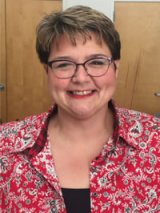
Mary Ann Settlemyre has been a kindergarten through 6th grade teacher for 27 years, the last 10 years at Centreville Elementary School (CES). At CES, she has integrated environmental education into the culture of the school by weaving it into lesson plans for other classes such as language arts, science, social studies, math, and 21st-century skills. As the faculty leader for STEAM (Science, Technology, Engineering, Arts and Math) and Outdoor Education, Mary Ann designs engaging, environmentally based lessons consistent with Virginia Standards of Learning. The students, who represent a very diverse community with 55 languages spoken at the school, are actively engaged in hands-on learning inside and outside the classroom environment and research how to solve environmental issues.
Heavily involved with the 90-student Green Team, Mary Ann was the catalyst for the development of 10 outdoor learning areas, including gardens, a forest walking trail, a vernal pool, a bluebird trail, a greenhouse, and a butterfly garden. She and her students built a garden in the shape of Virginia, topographically correct, with plants indigenous to each region.
The school’s new Farmer’s Market, which Mary Ann organized, sells produce grown at the school as well as produce provided by a local farmer. She coordinates a food sharing program which sends home backpacks filled with food for students who might not eat otherwise; unused food is collected and taken to a local homeless shelter. Mary Ann’s leadership of the environmental education program was a major factor in CES’s recognition as one of the top 10 Greenest Schools in the United States by the National Wildlife Federation.
Mary Ann’s work and influence extend far beyond CES. She mentors teachers and schools that want to initiate environmental education programs, and meets quarterly with new teachers in the county to help them understand school science goals and objectives, and train them in techniques for engaging students and enhancing curricula. Ms. Settlemyre also assists with the Get2Green initiative, which drives environmental education efforts across Fairfax County Public Schools. A successful grant writer, she regularly conducts workshops for teachers on how to write grant proposals for their schools. She frequently appears as a presenter at state and national conferences.
EPA Region 4
Brian Soash, Lee County Middle School West
Leesburg, Georgia
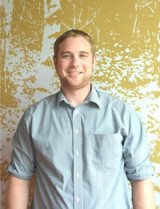
Brian Soash believes that effective science education focuses on students learning by doing. Brian, a science teacher for grades 6 through 8, uses this philosophy of experiential education as the focus of his program at Lee County Middle School West Campus in Leesburg, Georgia. With his work, students at LCMS West have now created zoo exhibits, run a mock Species Survival Plan meeting, held a school-wide campaign and election for the most important organelle, designed apps for the Georgia State Health Department, and taken science courses of their own choosing. Brian provides students opportunities to go beyond what they can learn from a book or a typical classroom setting.
Brian is a frequent visitor to the Chehaw zoo, where he learned about efforts to preserve the red wolf and where his interest led to a partnership with the zoo. Armed with this new partnership with the Zoo at Chehaw and the Red Wolf Species Survival Plan, he created “The Future Depends On It” project. The project was designed around teaching students about genetics and conservation through a real-world study of red wolves. This project-based learning experience follows a format that he uses across all grade levels to show students real world environmental connections to what they learn.
Brian has also created other project-based learning experiences that are helping students develop critical thinking skills that are needed to solve real world problems; for example, sixth graders participate in a “Flintration” project to learn how to evaluate the health of the Flint River and its inhabitants and how the water is impacted by point and nonpoint source pollution.
He has been involved in multiple local, state, and national agencies across the country, and he has presented project-based learning curriculum at the National Science Teachers Association conferences, National Council of English Teacher national conference, Bowling Green University STEM Symposium, North Carolina Science Teachers Association, Georgia Science Teachers Association, among many others. Brian has been recognized for his innovative methods over his career as the Georgia Middle School STEM Teacher of the Year in 2016, and in 2017 as the middle school recipient of NSTA’s PASCO STEM Educator Award.
EPA Region 5
No 2017 winners.
EPA Region 6
Donna Gradel, Broken Arrow High School
Broken Arrow, Oklahoma
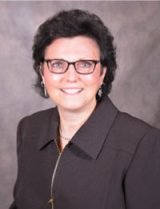
For more than a decade, Donna Gradel has been using project-based learning techniques in her environmental science classes. Donna, a teacher for grades 10 through 12, has more than 29 years of experience. When she began teaching at Broken Arrow High School, there were no recycling, composting, outdoor conservation, or energy efficiency programs. Encouraged by Donna, her students began to strategically address ways to positively impact the school’s campus and community.
First, students addressed the school’s solid waste stream by establishing environmental baselines for several types of environmental factors. The final plan they devised included reduction of biodegradable wastes by composting and addressed non-biodegradable waste through several campus-wide recycling programs for paper, plastic bottles and aluminum cans. Run by students, the recycling campaign reduced the campus waste stream by 37 percent.
In collaboration with the Broken Arrow area’s conservation department, Donna and her students designed and developed outdoor learning areas at the school which provide hands-on learning opportunities. As students became more aware of indoor environmental factors, they raised concerns about the school environment, prompting a coordinated effort between Donna’s students and the state and national Project Learning Tree organization. The result was a national grant that allowed students to work toward Green School status, and the school became one of the first in the state to achieve that status. Students collected data on a variety of environmental and comfort factors and performed an energy usage inventory.
In response to their presentation, architects used their input, resulting in higher quality lighting and ventilation in newly constructed classrooms from that point forward, a district-wide energy policy was initiated, a car-pooling initiative was proposed, and energy saving lighting and vending systems were implemented over time.
Donna’s students are involved in community environmental projects outside of school time other than class projects. The impact of these projects has prompted the Assistant City Manager, City Engineer, and Environmental Specialist to approach her to enlist the help of her science students to design a green ecological park across the street from the high school. Her students will collaborate with city officials and the parks and recreation division for the next 3 years to plan and implement the first green ecological park in the area.
EPA Region 7
No 2017 winners.
EPA Region 8
No 2017 winners.
EPA Region 9
John Wood, Samuel E. Talbert Middle School
Huntington Beach, California

John Wood is a teacher in grades 6th through 8th at Samuel E. Talbert Middle School. A teacher with more than 28 years of experience, John enthusiastically engages students in learning about the effects on a warming planet by changes in the carbon cycle from the Alaskan and the Siberian tundra.
Using web-based tools, his students have joined research expeditions to monitor the environmental changes in the water quality and climate effects on the glaciers of Mount Kilimanjaro, and are challenged during these expeditions through interactive blogs that include lectures, activities, videos, and leading questions. For the 7th graders, for example, John enlists climate scientists to begin interactive blogs with the students and develop a personal and professional collaboration. At the end of the expeditions, the student groups invite the scientist to a Skype meeting where they are introduced to the rest of the class and are given time to talk about their careers and research.
Beyond the classroom, John strives to offer students additional opportunities to become involved. For example, as a direct result of his work with the GLOBE organization, he is now the advisor for the school’s first after-school, student-led GLOBE club, where students learn basic protocols for data collection and posting and brainstorm ways to spread awareness of these issues to their local communities. This club has been involved in projects focusing on making the school greener through recycling efforts and a focus on environmental issues. In terms of STEM promotion, more than 80 percent of the club’s members are female students.
John considers one of his larger impacts the Fountain Valley School Districts Annual Polar Day Celebration. Growing out of his love for teaching polar education, the first event drew nearly 1,000 paying participants and focused on the many connections of the Polar Regions to global climate change. John was recognized as Teacher of the Year for Orange County in 2013 and Teacher of the Year in Earth Sciences in 2016.
EPA Region 10
No 2017 winners.
2017 PIAEE Honorable Mentions:
Stephanie Bacskai, Holland Township School
Milford, New Jersey
Stephanie Bacskai has 14 years of experience teaching K-12 students. Over the past 9 years, Stephanie has transformed the Technology Education curriculum to encompass integrated Science, Technology, Engineering, and Mathematics (STEM) and Sustainable Education. Her environmental program provides hands-on opportunities for elementary students to use growlabs to learn about seed initiation, transplanting, and plant growth, and participate in environmental laboratory exercises conducted in a passive solar geodome.
Stephanie also introduced lessons on constructing rain barrels, which her students, dubbed the “Water Whisperers,” publicized—the school now has four student-constructed and painted rain barrels, and a fifth resides at the local community center. An edible gardening area was built at the school, which has evolved into an even larger space that now serves as an outdoor living laboratory for 1st and 2nd graders. Stephanie also led students to conduct a 2-year investigation to reduce waste and generation of trash at the school, a school-wide green initiative that actively engaged middle school students as well as the younger students.
Stephanie’s educational activities within the school directly affect members of the surrounding community. For example, many of her students in the upper elementary grades have become ambassadors who have induced changes in the school and community. They attend Board of Education meetings, Town Council meetings, and professional workshops to convey their message of caring for the earth. Her students’ surveys, interviews, and data collections have altered local attitudes and practices. One of her programs encouraged the collection of plastic bottles, which led to the Board of Education to install bottle filling stations and encourage use of reusable bottles—ultimately these initiatives evolved into a broad waste reduction program.
Recently, Stephanie worked with a grant committee to develop practices in support of students with special needs, behavior disorders, and stress and anxiety by use of the school gardens and greenhouse to improve nutrition, advance mindfulness, and cultivate friendships. A highlight of her contribution to community outreach is student harvest of the edible gardens and contribution of produce to the local food pantry. She has been instrumental in establishing school partnerships with New Jersey Audubon, Eco-Schools, Taiwan Eco-Schools Exchange Program, and the National Wildlife Federation.
Joseph Bentz, Albert M. Greenfield Elementary School
Philadelphia, Pennsylvania
Joseph Bentz, a kindergarten through 12th grade educator for 14 years, now instructs 6th to 8th graders. He has creatively integrated local neighborhood and natural environmental settings with textbook learning to educate his students about ecological and environmental issues. When his students study classification of living organisms, they reference native trees in rain gardens within the school yard and explore the banks of the close-by Schuylkill River. Joseph frequently uses the river as a natural study site for water quality testing, nature walks, organism identification, storm water management, and Earth Day festivals. He has set up an ongoing affiliation between his school and the Philadelphia Water Works Organization to sponsor programs in water preservation and technology and a summer camp for students involving watershed education, field trips, camping, hiking, boating, and fishing.
John’s influence clearly has extended into the local community. The school serves an ethnically and racially diverse student body from the local, inner city neighborhood and from other city neighborhoods whose families span the full range of socio-economic status. Students locate the watershed in which they live, which leads to discussions between students and their parents that have encouraged parental learning about watershed issues and related environmental and ecological issues, including green solutions for storm water management, pollution, pest management, stream bank erosion, and deposition of sediment.
As the school representative on the Greening Greenfield Committee, Joseph convinced local professional organizations to fund conversion of blacktop areas at the school into rain gardens—now central to the environmental curriculum at the school and a green site of community activities including parties, a spring fair, and play equipment for school and neighborhood enjoyment. He has also contributed to environmental education professional development for the School District of Philadelphia by conducting environmental education workshops for teachers.
Annette Simpson, Keheley Elementary School
Marietta, Georgia
For 12 years, Annette Simpson has been a kindergarten through 12th grade educator and currently instructs kindergarten through 5th grade students. Investigation of watersheds is an important area of study for her 3rd grade gifted class. She leads field trips to nearby Rubes Creek, where she teaches students how to monitor streams and divides them into teams, each responsible for bringing equipment to and from the field, performing their tests, reporting results, and discussing their findings. Students study macroinvertebrates using Annette’s field guide that reflects local insect assemblages. She has jointly developed and implemented a highly successful Science, Technology, Engineering, and Mathematics (STEM) laboratory for all grade levels at the school; this laboratory is a unique setting for active student engagement and student-centered learning that supports development of communication skills, problem solving, critical thinking, creativity, and data analysis.
Annette emphasizes service to and influence on the community in her activities and those of her students. Sponsored by Rivers Alive Georgia, her 3rd grade students and many of their parents conduct an annual cleanup of Rubes Creek to remove debris and improve the creek’s water quality. She led a group of 5th grade students in a community service project of planning and hosting a spaghetti dinner to raise money for controlling erosion on the school’s campus. During the current year, her students collected 500 pounds of plastic bags and wrapping materials and embarked on a campaign to educate other students about need to recycle plastics.
Ms. Simpson leads organization of Water Day, Science Day, STEM, and Family Science Night that draw participants and attendants from both the school and the community. She has delivered presentations on her methods of teaching about the environment and her integration of science teaching with language arts and mathematics at county-level professional development trainings for 4th grade teachers and at annual conferences of the Georgia Science Teachers Association (GSTA). Recognition of her many innovative and important activities inside and outside of her school led to her selection as the GSTA Georgia Science Teacher of the Year in 2015.
Amy Schwartz, Edison Middle School
Wheaton, Illinois
A science teacher, Amy Schwartz embarked on an ambitious project with her 6th and 8th grade students to transform a scrubby patch of weeds and dirt behind their middle school into a native tallgrass prairie. Eighth graders researched benefits, plants, costs, and materials; and formed teams to identify and address budget and finance, implementation, advertising, and communications topics.
After a successful student presentation to the school administration and the Wheaton Park District to request permission to build the prairie, the students organized an “adopt-a-prairie-plant” sale and education program at the school. Sixth graders designed creative advertising messaging about the upcoming plant sale which raised enough money to purchase more than 200 prairie plants. The purchase and planting by the students had a significant impact on students and members of the wider community. For students, the prairie patch provided hands-on learning experiences, including quadrat observations of populations and density, comparisons of biodiversity (e.g., baseball field versus a prairie), studies of ecosystem health, food webs and chains, and investigations of invasive versus native species. The outdoor learning environment was particularly valuable for students who lack access to a yard or garden.
For the community, which includes refugee parents and other parents holding conservative views predominant in the area, the constructed native prairie led to positive discussions between students and parents about significant environmental issues and the importance of science. Planting and caring for the prairie has been a transformative experience for the students and school community.
Amy also has teamed with language arts teachers to develop activities that integrate language arts skills with environmental content. For example, in a “Debates in Language Arts” unit, students prepared for a debate on an environmental issue staking positions supported by information they learned in Biology class. She also leads the Environmental Club, a student club that meets weekly to identify and plan activities to educate the school community about environmental issues. Under Amy’s creative leadership, the students are engaging with the world around them and delving into environmental issues.
Trevor Hance, Laurel Mountain Elementary School
Austin, Texas
Trevor Hance, a 5th grade teacher with 6 years of experience, is the author of an innovative curriculum that requires an analysis of how water moves and changes and in turn changes the world, leading to an understanding of the difference between weather and climate and an understanding of climate science. This learning platform centers on a theme of “Legacy,” which is a campus heritage and culture that passes from one “graduating” class to the next through stewardship of the campus outdoor learning spaces, including a 5-acre “wild space” on campus that is adjacent to the Balcones Canyonlands Preserve.
The “Legacy” concept is embedded in classroom studies through “Legacy Projects” that include both a full-year, grade-wide service learning project, as well as an individual Legacy Project in the second half of the school year. While the grade-wide Legacy Projects occupy the entire year, the individual Legacy Projects start on return from winter break when he surveys the campus and creates “job” opportunities for students. Whether restoring old bicycles, building a water-harvesting system or birdhouse, or designing and building mobile-raised garden beds to benefit the youngest and mobility-impaired learners, Legacy Projects provide a direct, daily and authentic experience where students master core academic concepts in math, science, language arts, and social studies.
To promote opportunities for his female students to explore and engage their interests in science and math through the lens of environmental education, Trevor designs and hosts an after-school “Daughters and Dads” workshop series that culminates in an outdoor learning experience that connects them with the greater community. Trevor also focuses on positive relationships with parents and other stakeholders in the community.
For example, while working on the “Water Harvesting for Wildlife” project in the school’s Nature Preserve, a parent donated an hour each day for two weeks to meet with students and transform a classroom-developed water-catchment model (built of foil, popsicle sticks, and school glue) into a fully engineered drawing. Trevor also secured grant funding for the development of flexible learning spaces, including an edible garden kitchen, a natural playground and a nature-to-neighborhood, place-based outdoor learning area that are dedicated to environmental education, academic success and human development.
Shelley Glenn Lee, High Tech Elementary North County
San Diego, California
Shelley Glenn Lee has more than 20 years of experience as an environmental educator and has been instrumental in the design of project-based learning curriculum at her school. As a science teacher at a public charter school in San Diego County, Shelley takes students at all grade levels “into the field” to experience firsthand the unique biodiversity of the area. Students from kindergarten through 5th grade are conducting research, learning about local and global environmental issues, and sharing their work with others. Shelley designed Tidepool Treasures, a project for kindergarteners and first graders centered on the concepts of habitat. By building small freshwater habitats that sustain snails, worms and fish and conducting fieldwork, the students learn how to connect with local biodiversity and think like scientists by making observations and recording their findings.
The students also participate in the school’s Kindergarten Conservation Series, a project that integrates reading, writing, math and art by challenging students to investigate their local habitat, and to write books that promote conservation; several of which have been published. These young environmental educators set up stations and present their work at a local aquarium and are very excited and proud to share what they have learned.
Shelley also collaborates with local organizations to inspire her students to make a difference within their community. First graders, participating in a unit on flight, explore local birds and collaborate with the local Escondido Creek Conservancy to build owl and bluebird houses that are placed within an open space reserve. Students in Shelley’s 3rd grade class learn about native bee species in her Bee the Change unit and work with and contribute to a University of California research project focusing on the effect of urbanization on local pollinator diversity. In collaboration with the San Dieguito River Park, fifth graders are studying locally sensitive species and have collected and analyzed thousands of photos from within the park to identify animals, the time of day, and location. This data was used to assess the behavior and abundance of locally sensitive species. Through these and many more efforts, Shelley has inspired her students to be lifelong learners with a respect for science and the environment.
2016 Winners
EPA Region 1
No 2016 winners.
EPA Region 2
David Amidon, LaFayette Jr/Sr High School
LaFayette, New York
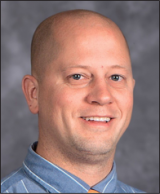
David Amidon has been teaching physical and life sciences to middle school students since 1999. During this time, he has engaged students in a variety of lessons to improve their understanding of the human impacts to ecosystems and environmental sustainability. Several of David’s lessons integrate technology and environmental education.
Using tablet computers, students identify invasive plant species on the school grounds; or complete a simulation of toxin bioaccumulation, recording toxin levels to instantly create data charts and graphs.
His Green Building Initiative used the school’s renovation as an opportunity to help students research the feasibility and costs associated with green building and infrastructure, including new lighting and green roofs. In collaboration with interns from the Sustainable Materials Management Stewardship Program at Syracuse University called My Impact, students analyze their personal waste generation habits and learn about aspects of sustainability like composting, recycling, and repurposing.
In another of David’s lessons, his students investigate historical factors contributing to the pollution of a nearby Superfund site, Onondaga Lake. David tries to continually create new projects or find new groups for his students to work with.
David hopes to integrate his lessons, projects, and approach at the school district level. He is already developing a project to convert a drainage basin into a rain garden. Through his participation in the New York State Master Teacher Program, David is helping to convene a Youth Climate Summit, bringing together students from 20 districts.
Shakira Provasoli, Manhattan School for Children
New York, New York City
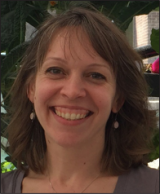
Shakira Provasoli has been a kindergarten–12th grade educator in New York City for 16 years. Over the past five years, she developed a curriculum centered on her school’s greenhouse that incorporates the New York City Science Scope and Sequence. Instead of covering compartmentalized topics or lessons, Shakira uses long-term projects to let students delve into topics and generate in-depth knowledge. Curriculum topics include systems and cycles, environmental interaction, sustainable solutions, and sustainable cities.
Each year, kindergarten–5th grade students revisit the same curriculum topics or themes using different subject matter; each subsequent year requires more initiative and involvement from the students. In kindergarten and first grade classrooms, Shakira reads to students about subject matter selected by the entire class. In the second grade and beyond, groups of students identify a problem and Shakira teaches them how to use books, internet articles, and interviews to conduct research. Students then work together to brainstorm multiple solutions to the problem and present their solutions using posters, videos, public service announcements, letters, models, songs, plays, or board games.
Her fourth grade classes collaborate to build hydroponic systems from an air pump, bike needles, plastic tubing, and water bottles, with each student tasked to help with one specific part of the construction. Students then test the effect of water pollution on the growth of plants. Shakira always emphasizes both individual achievement and collaboration among students.
Shakira extends her teaching scope outside of the kindergarten–5th grade classroom, as well. She taught a 36-hour “Water, Energy, and Waste: Integrating Themes of Sustainability into Your Classroom” course for the After School Professional Development Program. Shakira also taught a hydroponics workshop at the Environmental Study Center in New York City. She currently offers workshops to teachers to help with management, operations, and curriculum for greenhouses at their respective schools.
EPA Region 3
Christopher Freeman, Floyd E. Kellam High
Virginia Beach, VA
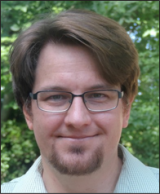
For 13 years, Christopher Freeman has challenged his 11th and 12th grade students to address real- world problems and engaged them in thoughtful discourse, idea generation, experimentation, and collaboration. He believes in a student-centric approach that empowers students to make a difference in their community by becoming engaged environmental stewards and devising solutions. As a result, many of his projects involve the local community.
In one instance, Christopher convinced an architectural firm to collaborate with his students on the design of a new school. His students worked with architects, engineers, and each other to develop designs and create scaled three-dimensional models of an edible garden, an outdoor classroom/gathering area, and a natural marsh water purification site.
In another instance, he installed a 200-gallon aquaponics system with a soilless garden bed in his classroom, because many of his students’ families are involved in farming. After students learned that high levels of nitric acid were hurting the fish, they ran tests, researched the cause of the problem, and developed a solution involving potassium bicarbonate. Christopher has found that current environmental events are among the most important drivers of content in his classroom.
At a broader level, Christopher created the Kellam High School’s Climate Change Mitigation and Adaptation Challenge in which students worked together to create solutions to help Hamptons Roads cope with climate change and sea level rise. He also helped promote an academic and behavioral shift by convincing the administration to offer an Advanced Placement Environmental Science class and establishing two environmental clubs: the Kellam Agricultural Engineers and the Pollen-Nation clubs. He envisions expanding environmental education into other subject areas in order to increase environmental literacy.
Lolita Cariaso Kiorpes, North Point High School
Waldorf, MD
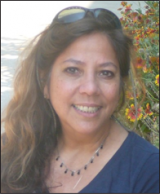
For almost two decades, Lolita Kiorpes has taught high school students the importance of a healthy environment through appreciation, learning, and enjoyment of the outdoors. She places a strong emphasis on her students getting outdoors, participating in outdoor activities, and taking leadership and planning roles. She gives students numerous opportunities to experience the environment through canoeing, water quality testing, macroinvertebrate studies, trash collection, and stream cleaning.
Her students have educated community members about National Marine Sanctuaries, as well as planted native flower gardens and trees to increase awareness of climate change, watershed health, and ocean health. When she cannot bring her students outdoors, she seeks out ways to bring the environment into her classroom.
Through the Department of Natural Resources-sponsored programs Raising Horseshoe Crabs in the Classroom and Trout in the Classroom, her students have learned the importance of sustainability, healthy ecosystems, and the vitality of saltwater habitats. These programs allow students to learn real-world scientific and technical skills such as caring for animals and conducting water tests.
Last year Lolita and her students became the first National Oceanic and Atmospheric Administration (NOAA) Ocean Guardian School in Maryland. She and a team of students conducted outreach to teach other students what they had learned about watershed and ocean health, National Marine Sanctuaries, climate change, and environmental stewardship. Lolita also newly incorporated climate change lessons into her curriculum. These lessons engage her class in discussions on how California’s drought has altered the water cycle, and vegetative, animal, and watershed health; and how the ramifications of these changes spread far beyond California’s borders. Lolita has many more field outings planned through her NOAA Ocean Guardian School Grant, and aims to bring environmental awareness to as many students and community members as possible.
EPA Region 4
No 2016 winners.
EPA Region 5
Kip Brady, New Philadelphia High School
New Philadephia, Ohio

At New Philadelphia High School, Kip Brady has developed engaging field studies that immerse his 10th, 11th, and 12th grade students in authentic investigations of their local environment and ecosystems. Most of the environmental education experiences that he developed involve the scientific study of how human land use influences biological diversity. His students have conducted multiple studies of post-mining ecosystems and restoration.
During the 2012–2013 school year, he coordinated with landowners across Tuscarawas County so that over 700 students could examine how surface coal mining history has affected salamander diversity. This project allowed students to learn about local salamander diversity, the ecology and physiology of salamanders, the importance of forest integrity to forest-dependent species, experimental design, and how to analyze and interpret replicated data.
Kip also found ways for students at all grade levels to engage and involve their families in learning about forest ecology. He leads nocturnal survey events during spring and autumn evenings at local nature centers. Before going out to explore the forest, these events brief participants about forest ecology, species they are likely to encounter, and proper etiquette for nocturnal surveying.
Kip has conducted numerous professional development activities at the district, county, and state levels to share his ideas for environmental education. In addition to providing experiences that combine science and environmental education, he has demonstrated to students and teachers that learning is an ongoing process.
Ronald Hochstrasser, Sycamore Community High School
Cincinnati, Ohio
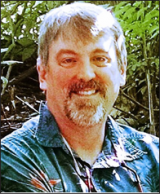
Ronald Hochstrasser has been an educator for almost three decades. At Sycamore Community High School, he has worked to create a space where his urban and suburban students can increase their awareness of nature. Ronald and his students have constructed several gardens, each with a different function. One garden sequesters and filters water from the school parking lot, another provides a milkweed habitat for butterflies, and another provides fresh herbs for school meals.
Many of Ronald’s projects rely on the numerous trees that he, his students, and community volunteers have planted over the years. In one project, students use forestry tools such as a Biltmore stick to measure trees. In another forestry-related project, students develop their own field guides for local species including mammals, amphibians, reptiles, and birds. Ronald also developed a simulated stream due to the lack of any in the immediate area. Students investigate the health of the stream and develop a pollution profile by collecting data on water quality and hundreds of macroinvertebrates.
Ronald has increased the opportunities for students, parents, and community members to immerse themselves in nature through extra-curricular activities. He began a birdseed sale through the school’s environmental club. He also partnered with the Ohio River Foundation so that students can construct rain gardens throughout the community, monitor local water quality, and assist in the removal of invasive species in parks and natural spaces. He is currently integrating broader subject matter (e.g., foreign languages), additional grade levels, more diverse learners (e.g., special needs students), and more expansive geographies (e.g., school, district, community) to develop rain gardens and advance environmental stewardship education.
EPA Region 6
No 2016 winners.
EPA Region 7
Shawn Graham, Accelere Program Omaha Public Schools
Omaha, Nebraska

Shawn Graham has been teaching 11th and 12th grade students for 13 years. His two main goals are to generate a deeper understanding of course topics by connecting his students with the environment, and encourage students to pursue life-long learning through post-secondary education. Three years ago, Shawn created the Accelere Job Shadowing/Internship program, which identifies students’ interests and matches students with community partners in relevant fields.
Since the creation of Accelere, Shawn has taken advantage of these partnerships in a number of classroom projects. For example, with the Nebraska Games and Parks Hatchery, students utilized the school’s new hydroponic laboratory to assess ways to increase food production while maintaining a healthy ecosystem for White Nile Tilapia. Shawn also coordinated with city staff, students, and Omaha Permaculture personnel to “green” vacant and unused properties. In one year, his students grew an estimated $2,000 of plants from these properties for use by the city. In conjunction with the Scott Aquarium at the Omaha Henry Doorly Zoo, his students assessed water quality, analyzed data, and made recommendations to improve water quality.
In addition to offering an after-school explorations option, where students can work on their own projects, Shawn engages his student in extra- curricular activities that benefit the community. At the Spring Festival, he and his students distributed free pollinator and vegetable plants to the public.
EPA Region 8
Heather Berry, Highlands Ranch High School
Highlands Ranch, Colorado
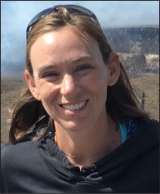
For a decade, Heather Berry has ignited her students’ passion about science and the environment through hands-on activities, connecting current events with classroom subject matter, and her unique “Project Based Learning Series.” By challenging her students to make their school or community more environmentally sustainable, they have developed several interesting year-long projects, including creating recycling and composting programs, using outdoor classrooms, installing a solar- powered cell phone charging station, and working with elementary schools to increase their environmental sustainability.
Her students also complete research projects on population growth, environmental biodiversity, and energy consumption and savings that require consideration of economic, religious, cultural, and governmental topics at the country level. Heather recently began an international collaboration opportunity; her students communicate about their daily lives and share sustainability projects with a school in Taiwan. In a similar fashion, she has extended environmental education beyond the classroom by taking her students on local, national, and international field trips. She and her co-workers have taken students to Hawaii, Iceland, the Galapagos Islands, and elsewhere to explore human impacts on these areas and participate in volunteer activities to improve the environment.
Heather participates in numerous speaking events, surveys fellow teachers to help integrate environmental curriculum into other content areas, and serves on a district Sustainability Steering Committee to add environmental education to other schools’ curriculums. She is planning a retreat with at least one teacher from each of the district’s schools to help broaden the scope of environmental education. Heather is also developing a partnership with a middle school in Taiwan so that her students can correspond on tree- planting and pond-building projects.
Monika Cloys, Lake County High School
Leadville, Colorado
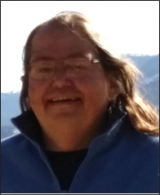
Monika Cloys has assumed many educational roles in her 11-year teaching career, including alternative program coordinator, science teacher, and online instructor. She uses curriculum ideas gained through her graduate work to develop educational units focused on citizen science and key environmental issues. These units require students to investigate real data and, in-turn, build critical thinking skills.
In Our Changing Climate, her students use current scientific data and data collected by indigenous people to study climate change in the Arctic. This project involves data analysis, hands-on science lessons, as well as student- led investigations and presentations. In her Ocean Journeys unit, students used the U.S. Satellite Laboratory’s Animals in Curriculum-based Ecosystem Studies (ACES) curriculum to learn about the role of oceans in human and animal journeys. The community service portion of her curriculum has expanded greatly in recent years as she has sought ways to get students in the field whenever possible. Her students conducted a waste audit for a recycling project and successfully petitioned multiple stakeholders to begin a composting initiative in order to reduce waste.
Outside of the classroom, Monika was involved in a teacher workshop to create lesson plans revolving around the district’s composting initiative. Additionally, it is her hope that all school districts in the upper Arkansas River Valley will use her district’s environmental educational model for soil science and begin composting initiatives.
EPA Region 9
Jose Flores, Brawley Union High School
Brawley, California
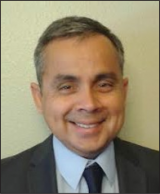
Jose Flores has been an educator for 25 years, filling numerous additional roles to share his experience and the exemplary environmental work of his students. His students have participated in programs such as the U.S. Environmental Protection Agency’s Indoor Air Quality Tools for Schools Action Kit, Salton Sea Now! – A Tipping Point, Kids Making Sense’s AirBeam air quality monitoring, Identifying Violations Affecting Neighborhood’s (IVAN’s) environmental violation crowdsourcing, California’s Blueprint for Environmental Literacy, and Revitalizing K-12 Civic Learning in California: A Blueprint for Action.
His students have been able to apply and transfer their education in Next Generation Science Standards to government and civics subject matter. Jose’s students regularly correspond and interact with government officials, and engage in environmental topics relevant to their community. For instance, they tracked household water consumption during the recent drought in California. Recently, Jose’s students co-hosted an event with Comite Civico del Valle to teach over 300 individuals nationwide about issues such as diesel fuel, pollution, asthma, indoor air quality, and pesticides.
Jose has supplemented his classroom contributions by serving on the California Task Force on K-12 Civic Learning, California’s Environmental Literacy Steering Committee, and the California Department of Education’s Instructional Quality Commission. He has also advocated for more environmental education throughout other departments, and trained fellow teachers on concepts such as water, air, solar, and pesticides.
Jeff Rivero, Yosemite High School
Merced, California
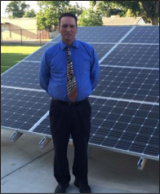
Jeff Rivero is a U.S. History and Current Events teacher at Yosemite High School who has combined environmental education with his curriculum to teach students about policies, behaviors, and decisions involving both economics and natural resources. He teaches 88 current events lessons, covering topics such as energy use, fuel resources, renewable energy, climate change, pollution, waste water treatment, and overpopulation. Examples of his students’ projects include creating a campus policy to conserve water, researching plastic bags made from protein, and advocating for drought-resistant landscaping on part of the school campus.
His students explore their own areas of interest, and through an after-school program called the Dragon Academy, Jeff offers after-school opportunities in worm farming, composting and recycling, gardening, social justice, and community service projects. These community service projects include volunteering to install low- to no-cost solar electricity systems through a partnership with GRID Alternatives. Jeff ensures that his students improve their environmental literacy by taking them outside of the classroom.
He has taken his students to Yosemite National Park; Santa Cruz, CA; and Monterey Bay’s Aquarium to teach lessons on ocean life, the effects of plastic on sea life, and natural resource exploitation. Jeff has also taken his students to speak with government staff about environmental policies such as solar power. He attends conferences and summits throughout the year to integrate the newest information into his classroom.
EPA Region 10
Megan Alameda, Baker Technical Institute
Baker City, Oregon

Over the past three years, Megan Alameda has transitioned her teaching from a purely instructional format into a collaborative and interactive process that engages her students in the cleanup of a nearby brownfield. Her students have learned about brownfields, researched and written Requests for Proposals, worked with administrators to select and hire a cleanup firm, reviewed documents related to the cleanup such as the Quality Assurance Project Plan, observed various aspects of the cleanup, and presented their knowledge at a public open house and state brownfield conferences.
The project-based nature of her class allows grades 9–12 students to fill roles such as managers, coordinators, specialists, researchers, and presenters that best match their individual strengths. Megan and her students have partnered with various organizations such as the Powder Basin Watershed Council to get students in the field at least once a month and participate in aspects of the brownfield cleanup process.
She has also connected with local businesses and organizations in order to find additional brownfield projects. Megan’s class engages previously disenchanted students who did not anticipate pursuing education beyond high school. She strives to teach students that they have opportunities in the environmental sciences while showing them how the classroom content connects to an environmentally sustainable lifestyle.
Laura Tyler, South Shore PK-9 School
Seattle, Washington
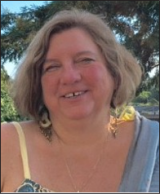
Laura Tyler has spent three decades as an educator helping improve urban students’ environmental understanding and the environmental sustainability of her school system. Recognizing the importance of creating a connection between nature and her students, and providing urban students with a relaxing natural environment, Laura brings her students on field trips that allow them to see a variety of local ecosystems. Her Solutions and Pollutions unit, for instance, teaches students about water chemistry by having them test water quality at nearby Lake Washington.
With the help of the Seattle Parks Department, her students have helped restore part of the East Duwamish Greenbelt. Students set up transect lines to subdivide a plot of land in order to count invasive and native plants, and then remove invasive species and plant native species. Laura also collaborates with Seattle Tilth so that her students learn about soil, farming, livestock, and the variety of crops grown in their area. To ensure her students keep this connection to nature in the classroom, she invites guests to speak about topics such as the importance of clean water for oysters and future improvement plans for local creeks.
In addition to her contributions in the classroom and in the field with her students, Laura has had a major impact on the environmental sustainability of her district and community. When she began teaching 30 years ago, she helped start and grow a four-school recycling program into a recycling and composting program that now exists in every school in the district. She worked with Seattle Public Utilities to pilot a Salmon in the Classroom project that ran for 10 years, and currently serves on the city’s Environmental Education Committee.
2016 PIAEE Honorable Mentions:
- Rosalina Alvarado, Ponce, PR
- Ryan Miller, Arlington, VA
- Jennifer Edwards, Detroit, MI
- Angela Harding, Bloomington, IN
- Alejandrina Mejia, Phoenix, AZ
2015 Winners
EPA Region 1

Ross McCurdy, Ponaganset High School
North Scituate, Rhode Island
Ross McCurdy has been helping students connect with the environment throughout his 17-year career as an environmental educator. Ross teaches science to students in grades 10 through 12 at Ponaganset High School, where he uses project-based learning methods to create challenging hands-on learning opportunities. Students in his classes are encouraged to apply what they learn in the classroom to solve real-world problems.
His students have conducted extensive research on renewable energy technologies and applied this knowledge to several projects, including creating a hydrogen fuel cell-powered Ford Model T, preparing and driving coast to coast in a turbo diesel pickup truck fueled by biodiesel, and even forming a musical group called Protium, which powers its musical equipment using a 1,000-watt hydrogen fuel cell with alternating current output. His students also constructed a small 16-foot by 8-foot solar building on the school’s grounds.
The building, named the Solar Shed, was a coordinated effort that included contributions from students in Wood Tech and Alternative Energy classes. Students worked together to research the solar components and build the shed, gaining first-hand knowledge of the environmental benefits of utilizing solar energy.
Ross has also been pivotal in development of the environmental science curriculum at his school. Through his efforts, Ponaganset High School now offers Science and Alternative Energy and Sustainable Systems classes. In addition, sustainable concepts are integrated into the broader school curriculum. He also helped influence installation of sustainable clean energy technology during renovation and expansion of the high school and construction of a new middle school. Both schools are now equipped with biomass heating systems that use waste wood chips from the local lumber industry. His ability to make lessons relevant, engaging and fun is encouraging his students to take an active role to improve the environment.
EPA Region 2

Minnuette Rodriguez, Julian F. Blanco Specialized School of Ballet
San Juan, Puerto Rico
Minnuette Rodriguez has been an environmental educator for 13 years and currently teaches students in grades 9 through 12 at the Julian F. Blanco Specialized School of Ballet. In her classroom, Minnuette uses innovative, hands-on educational strategies to integrate environmental science with real-world situations. Students in her class spend time in and cultivate a butterfly garden to learn about monarch butterfly migration, the loss of the monarchs’ native habitat and anthropogenic impacts. Minnuette also challenges her students to think critically to develop environmental solutions through modeling. Her students learn about human impacts on the environment by developing physical models that illustrate environmental issues related to oil spills, deforestation, air pollution and habitat loss.
Minnuette also serves as coordinator for her school’s Eco School Environmental Program. This program integrates environmental principles into the curriculum for other school subjects and enhances environmental awareness at the school and community. For example, students in the school’s history class focus on the history of forests and how people have advocated for forest conservation. In mathematics class, students perform quantitative data analysis and create graphics based on the monarch research conducted and data collected in the school’s butterfly garden. Minnuette’s dedication to the environment and hard work have inspired in her students a love for science and nature and an understanding of the importance of biodiversity.

Sven Strnad, Millstone River School
Plainsboro, New Jersey
For 13 years, Sven Strnad has taught environmental science to students in fifth grade through hands-on activities that connect students to the natural world. Sven created a unique environmental classroom where students learn about and interact with live animals, including ball pythons, a corn snake, a box turtle, bearded dragons, a veiled chameleon, a Chinese water dragon, uromastyx, Madagascar hissing cockroaches, mealworms, beta fish and clown fish. The classroom is also equipped with skeletons, skulls and other natural curiosities.
Sven’s students constructed a vernal pool in one of the school’s outdoor courtyards to enable students to grow tadpoles and learn about the importance of habitats. Sven’s students also conduct research and hands-on projects at the school’s neighboring woodlands, water bodies and fields. The success of his lessons has not gone unnoticed in his school district. Each year, Sven participates in a Math/Science Day at two schools in his district where he gives a presentation, Why Did the Animal Cross the Road, about human interaction with animals within an ecosystem. The presentation focuses on why animals are often found near roads, and Sven draws a layout on the floor to illustrate the habitats that exist on both sides of the road and why a particular animal may be interested in crossing the road.
Sven’s innovative teaching approach fosters excitement, confidence-building and inquiry, and motivates young students to discover the environment. He helps increase student achievement by integrating environmental education into different content areas. Sven’s creative, interdisciplinary and replicable approaches to environmental education engage fellow teachers, parents and students.
EPA Region 3

Liam McGranaghan, Loudoun Valley High School
Purcellville, Virginia
Liam McGranaghan has been developing a stimulating environmental science curriculum for 26 years that challenges and motivates students from a wide range of academic abilities. An avid naturalist and environmentalist, Liam emphasizes to his students that to be environmentally literate, they need to recognize the surrounding world beyond what can be learned from textbooks. Liam’s students engage in hands-on learning opportunities that include bringing raptors and reptiles into the classroom to reinforce class lessons; identifying suitable owl habitats in the community; developing an information brochure on owl nesting for local landowners; locating owls; and gathering nesting data in the field.
Liam’s students also work with the community to maintain a 1.5-mile nature trail. The school uses the trail as an outdoor classroom, which is accessible to the community. The outdoor classroom helps students learn about topics that include native flora and fauna, stream monitoring for water quality parameters, tree identification, the importance of pollinators and the impact of erosion. Members of the community, including scout troops, residents and other schools, also use the trail for recreational and educational purposes. The non-profit organization, the Nature Generation, has formed a partnership with Loudoun Valley High School to host field trips from other schools. Liam’s students help lead student groups during nature activities and educate others about the importance of environmental stewardship.
Liam enjoys sharing his experiences and love of environmental science with his students. In addition to being an educator, Liam is also a nationally renowned expert on birds of prey and is the founder of the Loudoun Amphibian Monitoring Program. Liam is also a member of many organizations, including the Loudoun Education Association, the Virginia Herpetological Association, the Virginia Natural History Society and the North American Falconry Association.

Anne Moore, Goochland Middle School
Goochland, Virginia
For 16 years, Anne Moore has taught middle school students about the importance of environmental conservation and how their actions affect the health of the environment. Anne incorporates real-world environmental issues and hands-on projects into her lessons to challenge, inspire and engage students. Anne has developed programs that encourage her students to think critically to solve environmental problems. One program she developed, “Trash to Treasure,” requires students to analyze local waste management practices and research how those practices alter the environment. Students also research ways that illegally discarded tires can be retrieved and recycled, tour the local landfill facility and research and develop potential solutions to environmental issues.
As a result of her students’ planning and hard work, Chesterfield County has implemented an annual “Tire Amnesty Day,” when members of the community can bring unwanted tires for proper disposal. Her students participate in other notable programs that include a Chesapeake Bay Blue Crab Study and a Prothonotary Warbler Investigative Study. Both programs involve hands-on aspects that require students to examine an ecosystem’s components; identify areas of weakness or vulnerability; and learn about the connections of inputs, outputs and interactions needed for a balanced environmental system.
Most of the programs Anne has developed involve collaboration with the community or local organizations. Her students often consult with experts from organizations, including the Chesapeake Bay Foundation, the Virginia Department of Environmental Quality and the Virginia Commonwealth University. Through her hard work, Anne’s students leave the classroom with a better understanding of the delicate balance between humans and nature.
EPA Region 4

Robert Hodgdon, Richmond Hill Middle School
Richmond Hill, Georgia
As a teacher for 23 years, Robert has been pivotal in developing the Richmond Hill Middle School Field Studies Program (FSP). Robert started the FSP, which takes place outside of normal school hours, to provide students with hands-on, inquiry-based learning to augment what is presented in the classroom. Members of the FSP include students, parents and school staff, and they conduct ecological surveys, monitoring events and real-world data collection and surveying to assist biologists and specialists from the Georgia Department of Natural Resources and the U.S. Fish and Wildlife Service. During these efforts, students learn how to collect and analyze data and discuss conclusions.
Robert incorporates hands-on activities that are relevant to students and the community to enhance the success of the FSP. He inspires his students to be informed environmental advocates by encouraging them to understand how the environment affects their lives and how their actions affect the environment. As the FSP continues to grow, Robert has enlisted teachers and parents to lead groups and activities. He plans to expand the program to include high school science teachers and students.
Robert’s success and dedication to environmental education have earned him several honors, including the Richmond Hill Middle School 2015 Teacher of the Year and the Georgia Science Teachers Association 2015 Middle School Teacher of the Year. Robert also serves on the Superintendent’s Teacher Advisory Committee and has helped develop science benchmark assessments for the district.

Jenna Mobley, Springdale Park Elementary School
Atlanta, Georgia
Over the past 6 years, Jenna Mobley has been growing the environmental science program at Springdale Park Elementary School. When Jenna began as a second grade teacher at the school, it had recently been branded as a Leadership in Energy & Environmental Design Gold Certified facility with a rooftop garden. Jenna integrated the garden into her lesson plans, and she included other interested classes in activities at the garden.
Recognizing a need for an environmental program that reinforced science academic standards, Jenna spent much of her first year preparing a proposal for the school to consider a full-time environmental education position. Her efforts were successful, and Jenna has worked to challenge and inspire all of the students in her elementary school through hands-on lessons that teach environmental responsibility while reinforcing concepts taught in the students’ homeroom classes.
With the help of many experts, the school’s garden has evolved into an outdoor classroom containing a pollinator garden, an herb garden, a strawberry garden, fruit trees, berry bushes and a seasonally planted vegetable garden. Rainwater is collected using a catchment system, and a drip irrigation system delivers water to the garden’s plants. Other features of the garden include a compost tower, a worm farm, a beehive, bird feeders and weather stations. Jenna also sponsors the school’s “Green Team,” where students in grades 4 and 5 plan fun and exciting school-wide activities and community events that focus on environmental stewardship.
EPA Region 5

Lisa Bircher, East Palestine High School
East Palestine, Ohio
Lisa Bircher has been teaching environmental science for grades 9 through 12 at East Palestine High School for 22 years. Lisa — in close collaboration with her colleague, Bonnie Sansenbaugher — formed the East Palestine High School Science Club to engage students from a range of socioeconomic backgrounds about data analysis and laboratory methods through service learning and outdoor-based educational opportunities. Students who participate in the Science Club learn about environmental issues through activities that include controlling the spread of invasive species, performing outdoor cleanups and conducting water quality monitoring at local streams and lakes.
Lisa’s Science Club students learn about environmental science while also giving back to the community. They participate in service learning projects, such as the Ocean Conservancy’s International Coastal Cleanup Program, which involves thousands of volunteers worldwide to clean up local beaches and waterways. To assist the program, Science Club students tabulate and maintain data on trash they remove from their community and submit the data for analysis.
Students also use 48 acres of school district-owned woodland that they converted into an outdoor environmental education classroom for other service learning projects. These projects include collecting water quality data using a device with built-in sensors to measure pH, dissolved oxygen, water temperature, specific conductivity, turbidity and chlorophyll A levels to help assess the environmental health of the local watershed. Students in Lisa’s classes gain satisfaction and inspiration from knowing that their efforts make a difference in the environment.
EPA Region 6

Jolie Hobbs, King Elementary School
Van Buren, Arkansas
Working as a special education teacher in environmental science at King Elementary School in Van Buren, Arkansas, Jolie has expanded her school’s sustainability efforts and increased community awareness on important environmental issues, such as recycling, sustainable food farming and watering practices. Jolie started the Green News Program, which integrates environmental education into the school’s weekly assembly. Jolie also plans and organizes Earth Fest, an annual event in the community where children participate in Earth Day games and meet with local businesses and community members to talk about sustainable services and careers.
Jolie has been instrumental in educating students on green concepts and motivating them to be environmental stewards in the community. Through Jolie’s efforts, the school now has scheduled recycling drop-off days when students, families and other community members can bring their recyclables. Jolie’s students also spend time in the school’s outdoor classroom and greenhouse to learn organic farming concepts. They water the gardens with rain water collected in rain barrels. Jolie plans to add a butterfly and sensory garden to the outdoor classroom using native vegetation. Her efforts provide a positive learning environment where children discover the world around them, connect with their community and have fun at the same time.
EPA Region 7

Michael Hotz, Wyandotte High School
Kansas City, Kansas
Michael has been teaching environmental science for 30 years and currently teaches at Wyandotte High School in Kansas City, Kansas. Michael has been instrumental in developing a science curriculum at Wyandotte High School that uses hands-on, place-based learning and innovative teaching methods to inspire his students to explore the world around them and to be environmentally conscious members of the community.
Under Michael’s leadership, students transformed an unused school courtyard into an outdoor classroom containing more than 20 raised gardening beds equipped with automatic irrigation, walkways, and two ponds stocked with fish, turtles and aquatic plants. Students helped design and construct the garden space and are responsible for its maintenance. Biology and botany class students use the space to learn how to plant vegetables and flowers, and other students have used the space to conduct measurements for mathematics class, learn about the history of gardening for social studies class, write technical reports for English class, and as a setting for art and photography class. The outdoor classroom is a place where all of the students at the school can learn and connect with the natural environment.
Michael’s students also conduct annual energy audits at the school, when students collect data with light meters to determine what rooms require lighting, which rooms do not require lighting, and how lighting needs change throughout the day. The school has realized considerable cost savings as a result of this analysis, and students apply what they learn about energy conservation at home. Michael’s students also learn about aquaponics systems and explore the concept of locating aquaponics farms in the community to grow vegetables and fish. Michael has developed close relationships with fellow educators, neighborhood associations, universities and the local watershed association. He uses those relationships to provide his students with the latest news and research on the topics they are learning.
EPA Region 8

Sara Forness, West Fargo High School
West Fargo, North Dakota
Sara, an environmental field biology and environmental science teacher for students in grades 11 and 12 at West Fargo High School in West Fargo, North Dakota, encourages students to explore science through hands-on experiments in outdoor settings. Her students participate in community-based projects that promote awareness of a variety of environmental issues, including recycling, soil quality, water quality and the importance of local pollinators.
Students in Sara’s Field Biology class learn environmental science, local gardening practices and invasive species awareness through fun and engaging hands-on activities at outdoor laboratories. Students participate in the Audubon Society’s Great Backyard Bird Count and learn about bird calls and bird identification while collecting data. Sara also challenges her students through a winter insect project, in which each student engages in research to study how his or her assigned insect survives through harsh winter settings. During the project, students participate in an outdoor field component where they find insect galls, bring the galls back to the classroom, and grind them down to extract insect juice. The students perform chemical tests on the insect juice to find cryoprotectants. The project requires Sara’s students to set up data tables, take photos for their reports, perform laboratory analysis and complete a research paper.
Sara also encourages her students to form partnerships with local community professionals. On several occasions, former students who pursued careers in environmental science have come back to her classroom to speak to students about their professions and assist with classroom projects. Sara’s efforts continue to inspire a generation of environmental stewards.

Sarah Lord, Billings Senior High School
Billings, Montana
As an environmental science teacher for students in grades 10 through 12 at Billings Senior High School, Sarah encourages her students to explore science through hands-on projects in outdoor settings. Sarah developed the Phenology in the Park Project, where students visit a nearby city park with a small spring-fed creek to monitor water quality, perform minnow counts, assess macroinvertebrate biodiversity and assess how the change of seasons and human activities alter the ecosystem.
Many of the students in Sarah’s classes grew up visiting the park. Using it to learn about ecology, biology and chemistry inspires them. The project helps students learn laboratory and field research skills, such as how to collect data and maintain science journals, and challenges them to use their scientific and observational skills to think critically. Sarah’s Phenology in the Park Project has served as a model for the local Audubon Conservation Education Center, which now incorporates phenology data collection into their studies.
Sarah creates opportunities for her students that inspire them to enhance their science skills and to become actively involved in their school and community. Her students’ community-focused environmental science projects have gained the attention of the community, and coverage from local and state media outlets have helped promote the importance of environmental education programs in schools. Sarah’s passion and dedication to advance environmental education at her school has demonstrated to her students the importance of environmental awareness and community issues.
EPA Region 9

James Lance Powell, Menlo-Atherton High School
Atherton, California
James Powell, an environmental science teacher for students in grades 10 through 12 at Menlo-Atherton High School, is a firm believer in using outdoor settings to study the environment to make learning real and relatable. James has taught for 18 years and currently teaches an Advanced Placement Environmental Science class and a course that he designed, Environmental Analysis through Chemistry.
In his teaching career, James has led his students on more than 200 environmentally based field trips, including camping trips in several national parks; backpacking events; and visits to creeks, wetlands, wastewater treatment centers, transfer stations and recycling centers, and a power plant. James encourages his students to think critically, form conclusions based on their observations, analyze data and write scientific laboratory reports. His students also collect storm water samples from neighborhood storm drains and analyze them for pollutants. Results from their analyses are compared with EPA benchmarks for storm water discharge. Students decide whether any particular pollutant is above the EPA benchmark, and if so, identify where it may have come from, how it behaves in water and its impacts on the environment.
James has been pivotal in development of the environmental science program at his school, and his class curriculum has served as a model for environmental programs in neighboring schools. James designed a new course that uses a digital platform where much of the direct instruction takes place outside of class hours. Class time is interactive and is used for conducting laboratory work, field work and discussions. His Advanced Placement Environmental Science class routinely scores well above the national average in test scores. Through James’ efforts, students learn about the complexity of environmental issues and the importance of being environmental stewards.
EPA Region 10

Ryan Monger, Sultan High School
Sultan, Washington
- maintaining a salmon hatchery on the school’s grounds and releasing the fish into a local stream,
- surveying bacteria living on common surfaces such as those in the school’s weight room and on students’ cell phones,
- tapping maple trees at the school to make maple syrup,
- identifying trees, and
- growing edible plants in the school greenhouse using environmentally sustainable, small-scale farming practices.
Ryan’s students also participate in community-based projects, including environmental restoration projects to mitigate the impact of clear-cutting and the runoff of pollutants, and conducting an ongoing salmon study.
Ryan’s efforts to educate his students about the importance of environmental stewardship has garnered a great deal of support from the community. Local nurseries, hardware stores and seed companies donate supplies for the projects, and his students received recognition for their hard work when a local newspaper wrote a cover story on his unique curriculum. Students in his class are also working to integrate environmental education into the district’s preschool curriculum by involving preschoolers with the salmon hatchery project.

Robert Shepard, Seaview School
Edmonds, Washington
As an educator for 36 years, Robert Shepard has created unique environmental programs that enable students to experience and learn about the environment through direct, hands-on projects that encourage discovery, creativity and achievement. One of his projects, Salmon and Streams, helps students learn about the ecosystem interconnections among local salmon populations, the watershed and the students themselves. Students read about salmon, view instructional videos, collaborate with guest speakers and even raise salmon in the classroom.
His students perform water quality testing at a local creek, identify macroinvertebrates, and then release the salmon they raised. Robert’s students also restore the creek by removing invasive species and planting native vegetation. Many of these activities involve the participation of community members, including local rangers, leaders, tribal staff, City of Edmond workers and the Washington Department of Fish and Wildlife.
Robert continuously looks for ways to promote science within other subjects, and he has worked with other teachers to integrate science into other subject areas, including math and language arts. As a result of his unique hands-on programs and field work, Robert’s students gain first-hand knowledge of environmental concepts, such as plant growth, the properties of water and the impact of pollution on the ecosystem. Robert’s students have fun and gain confidence while learning, and many of his former students have pursued environmental science careers.
2015 PIAEE Honorable Mentions
- Morgan Cuthbert, Frank Harrison Middle School, Yarmouth, Maine
- Kim Preshoff, Williamsville North High School, Williamsville, New York
- Jessica McAtamney, WB Saul High School of Agricultural Sciences, Philadelphia, Pennsylvania
- Kevin Willis, Carmichaels Junior Senior High School, Carmichaels, Pennsylvania
- Kathleen King, General Ray Davis Middle School, Stockbridge, Georgia
- Carrie Settles, Brookwood High School, Lawrenceville, Georgia
- Joseph Brady, New Philadelphia High School, New Philadelphia, Ohio
- Lesley Zylstra, Hawley Environmental School, Milwaukee, Wisconsin
- Joshua Armstrong, Alpine Leadership Academy, Flagstaff, Arizona
- Jackie Lacey, Kimbark Elementary School, San Bernadino, California
- Barbara Bromley, Clear Creek Elementary School, Silverdale, Washington
- Sarah Gotschall, Ursa Major Elementary School, Joint Base Elmendorf Richardson, Alaska
2014 Winners
EPA Region 1
Gerard Reymore, Randolph Technical Career Center
Randolph, Vermont
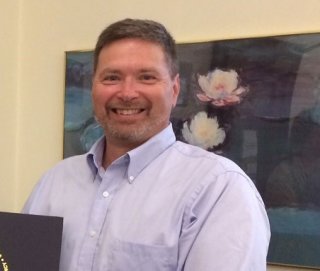
Located in Randolph, Vermont, the Randolph Technical Career Center serves a rural and economically challenged student body, and many students possess learning disabilities. For the past 9 years, Gerard Reymore has developed innovative ways to connect students to the natural world, spark their curiosity, and build strong environmental literacy skills that empower the students to contribute meaningfully to their community, while also building their career opportunities.
He incorporates agricultural and land management practices into their curriculum and often takes them into the field to learn about topics they are familiar with, including maple sugaring, logging and farming. He inspires students to learn about their environment, public health, and shared resources by using a combination of field-based experience, community partnerships, and community service, and he helps students build relationships with landowners, businesses and others in the Town of Randolph.
Gerard has established a strong network of local experts, business leaders and members of the community who help students learn through field experiences, and by giving back to the community. For example, after Tropical Storm Irene and Superstorm Sandy brought devastation to the area, Gerard empowered students to help others in the community during the storm recovery process by bringing in local scientists to teach students how to effectively participate in stream cleanup efforts, including bank stabilization, soil testing, and rehabilitation.
In addition, students manage their own maple tree forest where sap is collected yearly and used to produce maple syrup that is donated to the community and used in school cafeterias. Gerard’s students also participate in many other empowering, skill-building, field-based activities, including measuring the age, height, and diameter of trees, and storing data in a geographic information system (GIS) in order to analyze trends in forest growth and correlate them to climate and soil conditions for the local area.
Melinda Learning, R. Stewart Esten Elementary School
Pembroke, Massachusetts
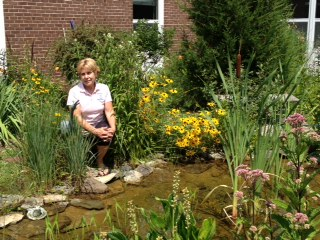
Melinda Learning uses a hands-on learning approach to teach reading, writing, social studies, math, science and environmental education at R. Stewart Esten Elementary School. Two examples of Melinda’s approach to environmental education are her creation of the Esten Community Nature Trail and a wildlife habitat and garden within the school courtyard. Both allow students to explore the world around them, help them learn about the importance of natural resources and promote environmental awareness within the community.
Melinda and her students have been maintaining and expanding the Esten Community Nature Trail since 1996 through activities such as investigating plant life, studying stream sites, building a boardwalk trail over a maple swamp, publishing several field guide books on the native wildlife they have discovered, and collecting bark rubbings for kindergarten classes. The wildlife habitat and garden includes a frog pond, a running stream, flower beds, garden plots, flowering trees and evergreens. With the help of Melinda and the local community, students were able to transform what had been a desolate area into a refuge for wildlife and a place where students learn about plant and animal life cycles.
Melinda’s efforts have engaged students in authentic investigative research and have provided them with opportunities to explore the outdoors in a natural environment. She also helps other classroom teachers prepare their students for investigations within the nature trail by providing resources such as tool kits, posters, books, and by suggesting activities to conduct in association with the nature trail investigation. Additionally, through grants, Melinda has been able to procure investigative tools such as binoculars, magnifying glasses, soil sampling tubes, compasses, stream study pails, water viewers and litmus paper. Melinda’s impact on her school is profound, and her ongoing efforts provide her students with opportunities to learn outdoors. Her commitment to environmental education includes continuous coordination to find funding and collaborate with local experts and community organizations.
EPA Region 2
Darelis Flores, The School of San Juan
San Juan, Puerto Rico

In addition to teaching elementary classes at the School of San Juan, Darelis Flores serves as the coordinator for the Eco School Environmental Program, which works to promote environmental awareness at the school and within the community. Among her many accomplishments is the establishment of a recycling center at the school, where members of the community, as well as the municipal public works, can deposit recyclable material. The recycling center is such a success that Darelis has been contacted by other communities seeking guidance on how to start a similar center. Under Darelis’ leadership, students help to ensure that all areas of the school are recycling.
Six years ago, Darelis played a pivotal role in establishing a student-run school garden. Harvest goes back into the school and the community. Many students have been inspired to create their own gardens at home. Darelis also directs the Environmental Club Pekekes through which children in first through eighth grade carry the message of environmental stewardship to their peers, families, and community. Members attend workshops, conduct field visits to see environmental impacts first hand, and interact with other schools internationally to share green tips.
As the coordinator of her school’s environmental activities, Darelis assists other teachers in selecting a yearly environmental theme to integrate into the curriculum. Students then choose an innovative project, which in the past has included installation of a hydroponic garden powered by a solar panel. Darelis’ efforts in environmental education affect her students’ lives beyond the classroom. Her students obtain the knowledge they need to be informed, active citizens who can minimize the school’s environmental footprint and solve environmental issues in their community.
Nathaniel Wight, Bronx Design & Construction Academy
Bronx, New York
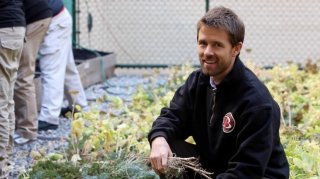
Bronx Design & Construction Academy is located in one of the poorest Congressional districts in the United States. As a founding teacher, Nathaniel Wight was pivotal in creating a learning environment where students make connections between sustainable technology and real-world environmental issues.
Nathaniel coordinated the installation of a green roof at the school and now students in his Energy–Environment Research Club and in ecology classes use the green roof to learn about environmentally sustainable building practices, food production and urban ecosystems. Students collect temperature data through which they learn the concept of the Urban Heat Island Effect, an important environmental issue in cities.
In addition, architectural and pre-engineering students survey the roof and use computer-aided programs to digitize data, plumbing students build rainwater harvesting and irrigation systems that conserve water, and carpentry students experiment with sustainable building designs. Nathaniel’s students also collect organic waste from the school and compost the material for the green roof’s garden to prepare it for yearly plantings they do collaboratively with elementary students and senior citizens.
Nathaniel’s students actively participate in sustainability events beyond the school and have been recognized locally, nationally, and internationally for their environmental stewardship. Nathaniel also serves as a mentor to his fellow teachers, where his dedication and passion for environmental education inspire others to learn and teach about environmental sustainability. His efforts have been so successful that plans to build an Energy Environment Research Center at the school are ongoing. The educational center will provide another opportunity for students and the community to learn about current environmental topics such as renewable energy systems.
EPA Region 3
David Andrews, Butler Junior High School
Butler, Pennsylvania
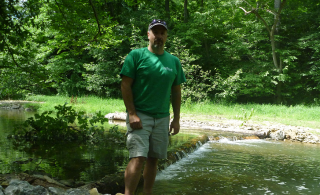
David Andrews teaches general science, environmental science and chemistry at Butler Junior High School in Butler, Pennsylvania, a suburban/rural area that serves a socially and economically diverse population. For 6 years, David has used the Trout in the Classroom (TIC) program to provide opportunities to students to raise Brook trout and release them into streams to help the local fish population.
David’s work with TIC helps make habitat improvements to one of the local streams, perform fish population and water quality surveys, and learn how chemical, biological, and human-interaction factors affect the fish population. David also has organized student tree-plantings to help rebuild a riparian buffer, student participation in litter cleanups, and opportunities for students to work side by side with professional biologists.
David inspires his students to give back to the community by participating in local projects that not only improve the habitat of local waterways but also environmental conditions in general, e.g., coordinating paper recycling at the school to reduce the amount of garbage being sent to landfills. Through service-learning projects such as these, as well as challenging curriculum that focuses on local concerns like healthy ecosystems and the Marcellus Shale energy field, David’s students gain a greater awareness of environmental issues and an appreciation for natural resources.
In addition to being an educator, David serves on several committees and works to widen the horizons for his students and the community they live in. David is a member of the XTO Energy Community Advisory Panel, which communicates with natural gas companies and the community to learn about and discuss energy options. David’s efforts to perform community service by establishing partnerships with local government agencies, state management officials, and corporations have earned him the Governor’s Award for Environmental Excellence.
Angela Whittaker, Cumberland County High School & Middle School
Cumberland, Virginia
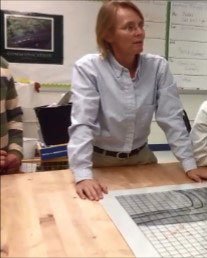
As a teacher for 17 years, Angela Whittaker has played a pivotal role in development of environmental education curriculum in Virginia and nationwide. For the last 7 years, Angela has been developing the Education for Sustainability Program, which fosters partnerships between the school, local businesses and the community. The program consists of hands-on courses in career and technical education (which have been adopted by the Virginia Department of Education), sustainable and renewable energy, and green building design.
Angela also developed Learning from Nature, a class that is taught to middle school students, who learn about biological gardening, soil management, sustainable landscape design, and water conservation by working with community experts in outdoor gardens, a greenhouse, and research landscapes. Each student designs a project to educate others about the importance of healthy food and sustainable resource management. For example, students built a raised bed garden that supplies food to the school cafeteria, the cooking class, and the local food bank.
Angela developed courses for grades 9 through 12 that focus on green building design and renewable technologies. As part of these courses, students complete service projects; e.g., building compost bins to educate cafeteria staff on composting, designing a photovoltaic system to install on the school’s roof, teaching younger students about solar thermal energy, and designing a solar energy-powered irrigation system for the school’s garden. Angela has also provided her students with activities such as the nationwide Recycle Bowl contest. Students in her sustainability class trained the student body and faculty about recycling and developed a recycling program for the elementary school. Angela’s dedication to environmental education continues to inspire students to promote environmental sustainability in their school and their community.
EPA Region 4
Charlene Mauro, Navarre High School
Gulf Breeze, Florida

Charlene Mauro has been an environmental educator in Santa Rosa County for 15 years and has been instrumental in the development of a nationally recognized marine science program. As the founder of the Navarre Beach Marine Science Station, her enthusiasm for science and learning has inspired many of her students to pursue college degrees in science, technology, environment and education. Approximately 85 percent of them have received Bright Futures scholarships when they graduated.
After thousands of community services hours and hard-won grant funding were expended, in 2009 Charlene and her students opened the Navarre Beach Marine Science Station in a formerly unoccupied ranger station. Since it opened, the Navarre Beach Marine Science Station has hosted more than 5,000 students and members of the community with programs and curricula designed for 3-year-olds to adults. The station offers field activities, overnight programs, public open houses, summer camps, festivals and programs for special needs children, all of which focus on conservation and respecting the marine ecosystem. Curricula at the station incorporate Science, Technology, Engineering, and Mathematics. Students learn how to keep laboratory journals, collect data and specimens, and collaborate with professionals on their research. Charlene’s efforts expose students to real-world experiences and environmental research careers, and challenge her students to be critical thinkers.
Students and visitors to the Navarre Beach Marine Science Station obtain an appreciation of the importance of the marine ecosystem and how they can make a difference. Charlene has earned several honors for her work, including National Marine Educator of the Year, Outstanding Florida High School Science Teacher, University of Florida Distinguished Educator, Navarre area Citizen of the Year, University of West Florida Outstanding Young Alumnus, and is a two-time winner of the EPA Gulf Guardian Award.
EPA Region 5
Paul Ritter, Pontiac Township High School
Pontiac, Illinois
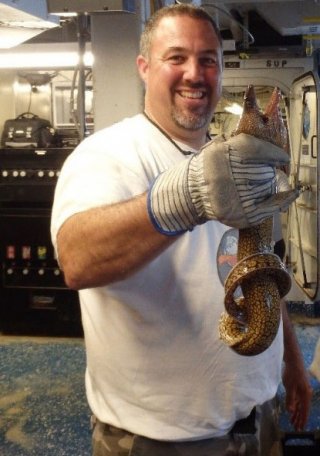
As a teacher at Pontiac Township High School for 17 years, Paul Ritter has developed an interdisciplinary curriculum that fosters collaboration among students and the community, challenges students to think critically about real-world environmental issues, and empowers students to conserve resources.
Paul’s Operation Endangered Species (OES) program develops students’ writing skills and promotes collaboration among students, professionals and government entities while educating the students on endangered species and how to take action to help preserve them. Paul’s International Prescription Pill and Drug Disposal (P2D2) program connects students, local pharmacies, police departments and municipal officials in order to educate the public on proper prescription and non-prescription drug disposal practices, drug misuse, and the harm that improperly discarded drugs do to the environment.
The P2D2 program has been so successful it has grown nationwide with participation of students from across the country. The program has international reach as well; Paul’s students are currently helping youth in Brazil implement the program. Paul has organized several other projects that engage his students and community, including educating the public on the hazards of dumping pollution-causing materials into storm drains, educating students on proper recycling methods, and developing a plan to lower the energy consumption of the City of Pontiac.
Many of Paul’s programs have gained international recognition, including an invitation from the United Nations Environmental Programme to speak in Kenya at the 2013 Tunza International Youth Conference, where Paul and his students presented their OES and P2D2 Programs. Paul also has received state and national recognition for his commitment to environmental education. In addition to being the President of the Illinois Science Teachers Association, Paul was named the National Science Teachers Association’s Environmental Educator of the Year in 2011.
Michael Sustin, West Geauga High School
Chesterland, Ohio
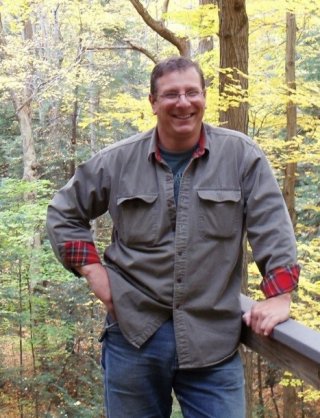
As an environmental science teacher for 23 years, Michael Sustin has been pivotal in development of environmental education in the West Geauga High School District. In 2004, Michael formed the first Envirothon team at the high school. To prepare students for the competition, Michael developed hands-on lessons in soil, aquatics and forest ecology, wildlife studies and environmental issues. Because of Michael’s success establishing an Envirothon team, the school administration asked Michael to develop an environmental science course.
Michael created a program that incorporates laboratory and field experience, research projects and student collaboration with professionals, and teaches lessons about resource conservation, wildlife management and sustainability – and then obtained grant funding for the program. Activities have included planning and constructing a 12,000-square-foot rain and butterfly garden planted with native species, and constructing a ¾-mile trail for place-based ecosystem studies with a vernal pool that connects the high school and middle school gardens.
Michael has continued to develop environment-focused curriculum and has formed community partnerships with organizations including the Geauga Park District, Cuyahoga Valley National Park, Geauga Soil and Water Conservation District, and the Ohio Department of Natural Resources' Division of Wildlife. After students reported seeing a bear in a park, Michael developed the Bobcat and Black Bear Research Program. With the assistance of local government agencies, Michael’s students learn about land navigation; flora, fauna, track and scat identification; camera surveillance; and literature research.
Michael’s success has earned him several honors, including the 2008 Educator of the Year from the Geauga Soil and Water Conservation District, and recognition from the Cleveland Museum of Natural History in 2009, the Environmental Education Council of Ohio in 2010, the North American Association for Environmental Education in 2010, and as a National Geographic Grosvenor Teacher Fellow in 2012.
EPA Region 6
Laura Wilbanks, Whiteface Elementary School
Whiteface, Texas
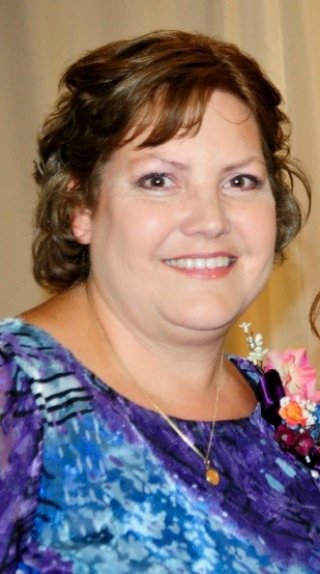
For 25 years, Laura Wilbanks has developed innovative outdoor environmental education programs that challenge her students to solve real-world problems using science, technology, engineering and mathematics. Her instruction goes beyond the classroom and into their communities and the outdoors, where students gain hands-on, project-based, real-world experience and learn the importance of team building.
Laura’s innovative environmental education program Science Rocks U integrates environmental education concepts into all subjects offered at the school. Students studying history and social studies learn about regional geography, students in art class sketch in nature journals, and physical education classes take hikes and learn the importance of hydration.
Laura encourages her students to collaborate with environmental agencies, scientists and experts to develop solutions to environmental issues. Her students have made many significant achievements, including the discovery that a particular shortgrass prairie plant was capable of hyper-accumulating arsenic from soil and could be used for bioremediation in contaminated areas; another was the discovery that green tea was effective at blocking ultraviolet rays and could be used as a sunscreen ingredient. Both discoveries have real-world applications that were recognized in 2013 by geoscience experts, as well as by former First Lady, Laura Bush. Through a partnership with the Bosque Ecological Monitoring Program, Laura’s students also learn how to conduct environmental monitoring, including measuring water levels, evaluating invasive species encroachment and conducting surveys of the endangered Texas horned lizard.
Laura’s efforts to advance environmental education have been recognized by several organizations, including the Muleshoe National Wildlife Refuge, Ogallala Commons, and the National Science Teachers Association. Laura also was the recipient of the 2013 GREEN Award by the Texas Tech University International Center for Arid and Semi-arid Land Studies to acknowledge the arsenic project she conducted with her students.
EPA Region 7
Kristine Denton, King Science & Technology
Omaha, Nebraska
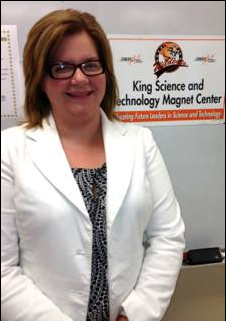
For 10 years, Kristine Denton has taught environment-oriented classes at King Science & Technology, a grade 5 - 8 urban school with a high percentage of participants in the federal lunch program. Kristine encourages her students to improve the environment and to be active in the community. Inspired by a University of Nebraska seminar, she partnered with the non-profit organization Whispering Roots and empowered her students to build two aquaponic systems in her classroom. These self-sustaining systems use waste collected from fish to provide nutrients to a soilless growing bed.
The systems introduce students to the benefit of sustainable farming methods. Students learn about crop rotation, water quality, photosynthesis and the nitrogen cycle, and are responsible for taking care of the fish, plants and lighting. Students log the daily test results to track data over time and identify trends. The produce harvested from the growing beds is donated to the local homeless shelter. Students lead tours and teach elementary students about how the system functions. Her students also maintain an urban farm of raised beds outside the school, then donate the harvest to local families.
Kristine engages her students by inviting community experts into the classroom. While Whispering Roots staff teach students how to maintain the aquaponic systems, environmental science students from the university teach the importance of water quality, and representatives from a local environmental consulting company promote recycling.
Kristine has been recognized for her efforts: the Center for Green Schools gave her the 2013 Trailblazing Teacher award, and the Omaha Reader Magazine named her one of Omaha’s Most Creative Educators. Currently, Kristine writes a science curriculum for the Omaha Public School System that includes lessons on global warming, recycling, animal conservation, renewable energy source, water and air quality.
Darrin Peters, Rockwood Summit High School
Fenton, Missouri
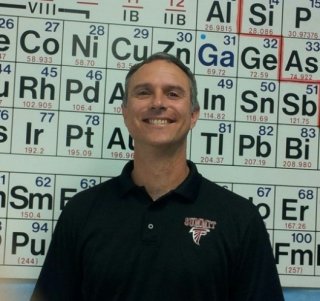
Darrin Peters developed an innovative curriculum that provides students at Rockwood Summit High School the opportunity to learn about renewable fuel. The project challenges students to conduct web research, design experiments, and produce usable biodiesel that passes ASTM International standards. The students test the fuel in a chassis dynamometer and five-gas emission analyzer at a local technical college. Tests using petroleum diesel and the student-produced biodiesel are conducted using the school’s two diesel vehicles, and students collect data to evaluate horsepower, torque and emissions.
Students learn firsthand that vehicles that use biodiesel do not produce hydrocarbons, unlike those that use petroleum diesel. Results of their experiments are recorded in their scientific journals and discussed in the class. Students also present their findings to other schools in the area, businesses, and science centers. In addition, they serve their community by making the high school a waste vegetable oil collection point for residents and nearby businesses. Several businesses and organizations sponsor the program, and biodiesel that is produced by the students is used in two school biodiesel vehicles.
In addition to teaching students in his organic chemistry class to perform experiments to produce biodiesel, Darrin organized an after-school club for students who are not enrolled in the class. Participation in the after-school program has become popular and productive. As part of the program, students learn how to make hand soap from methanol that is recovered from waste glycerin that is produced from the biodiesel production process. The soap is bottled using containers and labels donated by a local sponsor and is sold to local businesses. Darrin’s approach to environmental education excites and involves students during and after school hours through innovative learning experiences.
EPA Region 8
Christopher Lambrecht, Summit High School
Breckenridge, Colorado
After a few years of teaching at Summit High School in Breckenridge, Colorado, Christopher Lambrecht developed an intellectually stimulating core biology curriculum that include community perspectives and partnerships, real-world investigations, and data collection. Christopher’s Stream Ecology course includes topics on riparian ecosystems and focuses on geological, hydrological, physical, and chemical stream characteristics; drainage basin characterization; stream movement; and aquatic community drift and migration. Students learn how to collect laboratory and field samples and participate in the Trout in the Classroom Program, which includes interaction with local professionals from the Division of Wildlife and the Division of Natural Resources. The course teaches students valuable lessons, including the implications of overfishing, point source pollution, and how human activities alter the ecosystem.
The Fire Ecology course Christopher developed incorporates various written material, subject matter on past fire events in the area, field-based instruction, and the expertise of local professionals. Key concepts covered in the course include the science of fire, fire weather, the history of the Forest Service, and fire mitigation and community planning. During the course, Christopher and his students work with local fire districts, local engineering firms, and the Summit County Information Systems. They develop maps using real community data and build fire behavior models under certain topographic and weather conditions.
Amber Stout, Jefferson Elementary School
Pierre, South Dakota
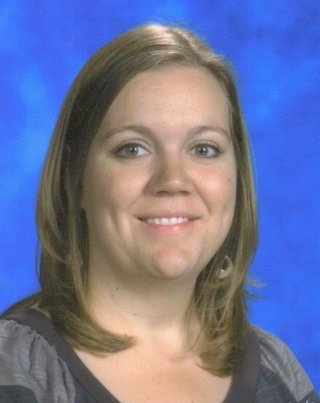
Amber Stout uses innovative outdoor teaching methods to engage her students in project-based learning about environmental protection and conservation. Students in her class, as well as parents and community members who are invited to participate in her outdoor class activities, experience nature firsthand. In addition, Amber encourages her students to share with their families the concepts they have learned at school. Amber organizes the creation of a butterfly garden every spring, where students learn about butterfly habitat and track butterfly species.
Other projects she has implemented include building a worm farm, baking treats in solar ovens, and hatching trout eggs in the classroom. During the trout hatching project, students monitor water quality parameters such as temperature and pH, and they monitor fish growth for several months. The project culminates with a field trip to the Oahe Dam where the students release the trout, with the assistance of the local Game, Fish, and Parks staff, into the Missouri River. This project teaches students the importance of nature preservation and ecosystem balance.
Students in Amber’s classes also learn about the life cycle of birds, their habitat, and conservation and adaptation by incubating several species of bird eggs. During this hands-on project, her students monitor the temperature of the eggs, turn them, provide care after they hatch and then release the young birds into the wild. Students also visit a pheasant hatchery to help state officials band birds.
Amber is not only an inspiration to her students, but to her fellow teachers and the community as well. Through grants she has obtained, Amber has purchased science instruction materials that encourage nature-based learning and has offered them to teachers across the district.
EPA Region 9
Melanie Blas, Simon Sanchez High School
Yigo, Guam
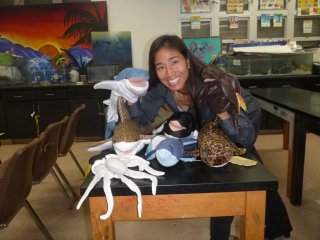
The majority of students qualify for lunch assistance at Simon Sanchez High School in Yigo, Guam. Melanie Blas has been educating students for 19 years about the importance of protecting the island’s natural resources, the ocean ecosystem, and the environment in general.
Melanie incorporates hands-on activities in her classes, such as field trips to Cocos Island to observe the Ko’Ko’ bird in the wild and to learn about how the invasive brown tree snake has been decimating the local bird population. Her students clean up beaches to protect the island’s reefs, and plant trees with the Guam Environmental Protection Agency, the Department of Agriculture, and the Divisions of Aquatics and Wildlife Resources (DAWR) to prevent soil erosion.
Melanie stresses the importance of sharing knowledge - her students educate the public about sustainability and the dangers of plastics in the ocean, and participate in a traveling puppet show and fair to educate younger students about watershed protection. Melanie empowers her students to write letters to leaders around the world and attend legislative hearings to interject information and passion about environmental sustainability, such as shark finning and its effects on the ocean ecosystem. She also helps her students realize that their actions and voice can have an effect on their island and beyond. Students maintain Facebook pages and design websites to share information on environmental issues.
Melanie frequently presents at conferences, including the Guam Department of Education Service Learning conference, the Service Learning Expo, and the National Partnership for Environmental Technology Education Indigenous Fellows Institute on Guam. She is organizing two conferences in partnership with the DAWR that will focus on invasive species and has been selected to serve on the National Oceanic and Atmospheric Administration’s delegation to the Guam-Hawaii Learning Exchange.
Bret Sutterley, Walnut Elementary Education Center
Turlock, California
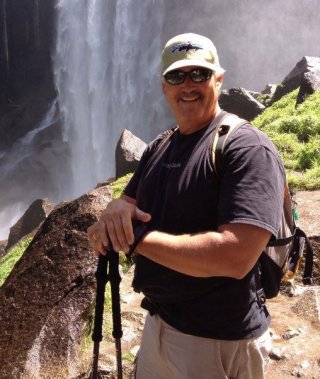
Walnut Elementary Education Center is a magnet school located in Turlock, California, that serves an economically and ethnically diverse community. As an elementary school environmental educator for 35 years, Bret Sutterley has been instrumental in the growth of environmental education and stewardship at his school. Bret uses grant funding to create hands-on activities for his students. He organizes tree plantings, conducts recycled art projects, plans assemblies on endangered species, and helped set up the Go Green film festival. Bret also developed the school garden, where children learn how to raise healthy foods, and The Walnut Energy Center, which contains a solar array and a working wind turbine.
As part of Bret’s curriculum, elementary school children also raise salmon, learn their life cycle, and release baby salmon into the area’s rivers, thereby learning the importance of the local waterways and the organisms that depend on them. Bret provides a variety of opportunities for students to learn about local environmental concerns, including field trips to the Pacific Ocean, Yosemite and the central valley grasslands. In addition, Bret has established partnerships with experts in the environmental field, including professors at California State University, medical doctors, biologists, and city and state officials.
Bret has been widely recognized as a leader in environmental education: the 2014 City of Turlock’s Educator of the Year, Rotary Outstanding Teacher Awards in 2002 and 2008, a Who’s Who in Education Award in 2004, The Prudential Education Foundation Award, the MOSCE Credit Union Excellence in Teaching Award, and the Stanislaus Service Center Council Bell Award. Bret has been invited to speak at many conferences, including a NASA Teacher’s conference, the International Reading Association conference, the California Reading Association State conference, and the California Kindergarten Association State Conference.
EPA Region 10
Kathleen Ferguson, Okanogan High School
Okanogan, Washington
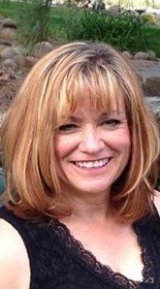
Kathleen Ferguson teaches Chemistry, Earth Science, Physical Science, Biology, Advanced Biology, Anatomy, and Ecology, to students in grades 7 - 12 at Okanogan High School in Okanogan, Washington. Kathleen has been a teacher for 29 years, and during those years has gotten her students involved in real world environmental studies that take advantage of the excitement and effectiveness of outdoor, experiential learning.
Kathleen’s students, including Native American, Hispanic and special education students, work with field scientists throughout the school year. For example, her Ecology students have been working with the Fisheries Division of the Colville Confederated Tribes to study the effects of interventions to rehabilitate a spawning channel on the Okanogan River. Biologists from the Conservation District teach the students about sustainable agricultural practices. Understanding that students enjoy being outside and that learning thrives when students are excited about what they are experiencing, Kathleen has her Advanced Biology students participate in the local, long term Oden Road Fire Study each year, researching water quality, soils, bird populations, and insect activity at the fire site. In addition, her Ecology and special needs students help the Conservation District with a native plant sale each spring, identify flora and fauna on Conservancy Island near the edge of the city, and create interpretive signage along a community walking/cross-country trail.
Throughout Kathleen’s teaching career, she has inspired and influenced other educators. As a National Board Certified teacher and trained mentor, she has coached K-12 teachers during their certification process and mentored student teachers who went on to successful careers in education. She has also worked with K-12 teachers to develop curriculum units in their school district, and has been a presenter at summer institutes in the Education Service District and at the Washington Science Teachers annual conference.
2014 PIAEE Honorable Mention Recipients:
- Naomi Volain, Springfield Central High School, Springfield, Massachusetts
- Eric Magers, Manchester Essex Regional High School, Manchester, Massachusetts
- Maggie Favretti, Scarsdale High School, Scarsdale, New York
- Ellyce Cavanaugh, Springhurst Elementary School, Dobbs Ferry, New York
- Kathryn Conner, Mundo Verde Bilingual Public Charter School, Washington, D.C.
- Julia Colaw, Petersburg Elementary School, Petersburg, West Virginia
- Dr. Suzanne Banas, South Miami Middle Community School, Miami, Florida
- John Rhude, Nicolet High School, Glendale, Wisconsin
- Joseph Brady, New Philadelphia High School, New Philadelphia, Ohio
- Kenton Page, Peggy Carnahan Elementary School, San Antonio, Texas
- Mary Erwin, Wilson Middle School, Albuquerque, New Mexico
- Eric Kessler, Center for Advanced Professional Studies, Overland Park, Kansas
- Sara Forness, West Fargo High School, West Fargo, North Dakota
- David Allan, Pacific Valley School, Big Sur, California
- Margaret Godshalk, Kimball Elementary School, National City, California
2013 Winners
EPA Region 1

Mary Marguerite Murphy, Camden Hills Regional High School
Rockport, Maine
Margo Murphy has been involved in connecting students with their local environments throughout her 27 year career. In 2007 she moved to Camden Hills Regional High School where she teaches Global Science and Botany. In her five years at CHRHS, she has helped to guide a student led group, the Windplanners, to reach their goal on installing a 100 kw wind turbine on campus. This multi-year, multi-generation project required students to collect and analyze data, engage the community in discussions, understand permitting and engineering, fundraise and monitor results.The first year anniversary was just recognized. Windplanner efforts are now focused on significant energy efficiency efforts and additional renewable energy projects. The Windplanners received the Presidential Environmental Youth Award for 2013 and were also selected to represent student projects in the USA for the Volvo Adventure international student environmental projects competition in Goteborg, Sweden.
Margo has also helped students install a school orchard and garden that produces food for the school lunch program. This past year students grew over 800 pounds of organically raised produce. This year, the orchard will begin producing food, and the garden continues to expand providing students with opportunities to learn about soil science, permaculture, organic practices, and are introduced to foods they are familiar with.
Margo is also very active on numerous local and state committees and has received many awards. She is a member of the Teacher Advisory Council (TAC) for the National Academy of Science and National Research Council. She currently serves on the state leadership team charged with the review and implementation of the Next Generation Science Standards. Margo is a nationally board certified teacher and has received the Presidential Award for Excellence in Mathematics and Science Teaching.
EPA Region 3
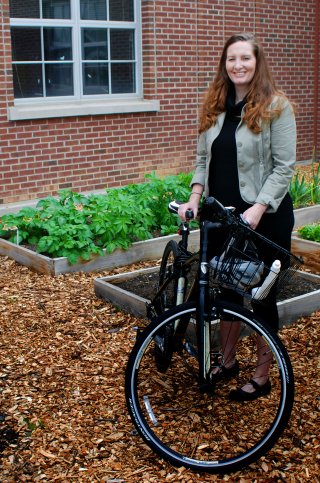
Mary Breslin, George Washington Middle School
Alexandria, Virginia
Mary teaches 7th grade science at George Washington Middle School in Alexandria, Virginia, where she mentors her students through understanding how they can make a difference in their community. Mary does this with the support of multiple partnerships that bring her students unique learning experiences. Earth Force, the Winkler Botanical Preserve, Arcadia Farms, the Alexandria City Department of Planning and Zoning, and the GW Community Garden have supported her students through grant writing, project development and planting their school garden. The accomplishments of Mary's students range in scope, from helping to save a botanical preserve to developing long-term studies within the city.
Mary values the importance of teaching a younger generation how to create a more sustainable environment, and her personal and professional experiences help her inspire students to tackle environmental issues. After graduating from George Mason University as a Biology major, Mary embarked on a mission to re-establish and study natural habitats, first with AmeriCorps and the Florida State Parks, then with the Student Conservation Association in Great Smoky Moutain National Park. However, when the Virginia Department of Transportation moved to condemn her family home to build a portion of the Fairfax County Parkway, she was forced to become an environmental advocate.
The four year journey of saving her father's house forever revolutionized her perspective on the state of our environment. She began working as a Sierra Club intern on Capitol Hill, which offered an eye-opening front row view to our country's decision making processes and allowed her to unravel the intricate web of environmental policy. Mary now draws upon these experiences to connect her students with real world issues and help them learn through community -based activities and youth driven civic engagement projects that integrate science, technology, math, engineering, and a variety of other academic and environmental concepts. Each year she teaches her students to become part of the solution.
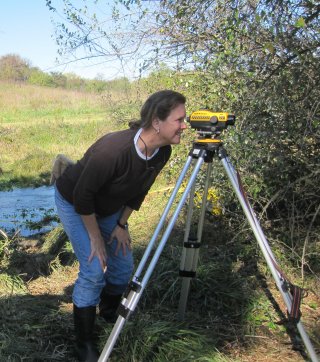
Carolyn Ruos Thomas, Wildwood Middle School
Shenandoah Junction, West Virginia
Carolyn Ruos Thomas has been guiding her 7th and 8th grade students through diverse experiences of exploration and creative projects in science at Wildwood Middle School for the past 6 years. ;Carolyn “accidentally fell in love with brook trout” and ended up integrating Trout Unlimited’s Trout in the Classroom Program into her classroom in 2010. Carolyn has tried to create learning experiences which engage students in the classroom, the field and in the future. The brook trout, which are West Virginia’s state fish, have provided unlimited possibilities for her students to study biology, chemistry, physics and earth science as well as engineering, surveying, sustainability, geomorphology, art, literature, the art and practice of fly fishing, and even cooking.
The stream and trout studies conducted by Carolyn and her students have been featured in TROUT magazine. Her work has been supported by an extensive group of community scientists and engineers who share their expertise and resources with her and the students at Wildwood Middle. The interaction of students with scientists and professionals in the community is invaluable as they learn about many careers and gain practical science and engineering skills through interactive learning experiences and projects.
Carolyn has also done exceptional and inclusive work with special needs students who find regular classroom tasks difficult but have more positive responses to learning in the outdoors. She is also an advisor for the Wildwood Environment Club, which supports students who wish to learn more about the environment and make stronger connections with their local ecosystems and community engagement. The club has carried out successful projects such as a collaborative tree planting initiative for the school campus, and a current rain garden installation project. Carolyn has shown tremendous skill in connecting science and environmental education beyond the classroom and into the wider community.
EPA Region 4
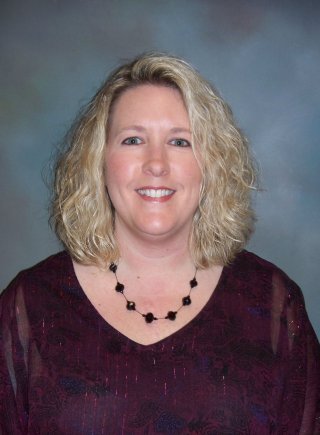
Jeanna Goodson, Maiden High School
Maiden, North Carolina
As a National Board Certified AP Environmental Science and wildlife teacher at Maiden High School, Jeanna has provided students with meaningful outdoor and integrated learning experiences. She strives to connect her students with the natural world in a way that fosters an appreciation for the environment while also building a practical understanding of community initiatives and collaboration. Jeanna worked with local community members and groups to design and create a campus nature trail that enables her students to access different ecosystems for outdoor labs and activities in their studies.
On the trail, students conduct science experiments such as water quality testing, and learn about local flora and fauna, population dynamics, air quality and pollution research. She utilizes a variety of creative and integrative education methods such as science simulations, interactive games, hands-on and team based activities and projects to help students to explore larger concepts and gain a better understanding of events and issues they may not otherwise experience. Her students learn the importance of connecting real world issues with their local community and environment which has direct ties to their daily lives.
Jeanna’s students share their learning experiences and enthusiasm for science, cultural and environmental issues with their families and community members through a variety of interactive projects that include creating and sharing an on-going environmental science A-Z booklet which includes images of labs they conduct, outdoor lessons, and written materials. Parents interact with students in this project through their written reflections about environmental science they collaboratively discuss with students. Jeanna also works with other teachers to encourage the integration of nature activities into other subjects and has participated in North Carolina’s rigorous Environmental Education Certification Program. Jeanna’s exceptional dedication to her students is apparent as she tries to help instill a sense of awareness and responsibility in her students as they learn to be mindful of how their actions can impact the world around them and how they can each make a difference as responsible stewards of the earth.

Mary Catherine Padgett, Ford Elementary School
Acworth, Georgia
For almost twenty years, Catherine Padgett has worked tirelessly to preserve, develop and sustain close to 30 acres of land into an extensive outdoor learning center for the 800 students at George R. Ford Elementary School in Acworth, Georgia. She included teachers, parents, scouts and community partners in the creation of Ford’s Children’s Garden, the construction of extensive outdoor learning labs, and the restoration of native habitat. The outdoor labs include pollinator habitats, a native tree arboretum, a Math Garden, aquatic habitats and a large community garden. There are also three wooded amphitheaters, an extensive nature trail and stream observation station, composting areas, and an Eco-Therapy natural playscape geared to accommodate special needs children.
A teacher herself, Catherine organizes in-service training for teachers and non-formal educators, and guides community service workdays at Ford. In 1995 she initiated Evening in the Garden, an integrated curriculum celebration attended by over 500 guests, and encourages parental participation in the classroom by helping develop curriculum and best practices for the Earth Parent Program. Catherine’s achievements have been widely recognized on a local, state and national level and received Georgia’s Environmental Educator of the Year Award for 2010. Ford’s environmental education program serves as a model school for The Captain Planet Foundation, and received the National Green Ribbon School Award for 2013.
Her commitment to environmental stewardship is well-respected and she shares her experience through state-wide seminars, and this year helped to organize and host the Learning Garden Conference at Ford. She also serves as Ford’s liaison to schools and outside organizations and this summer will be presenting Ford’s model program at the National Children and Youth Garden Conference.
EPA Region 5
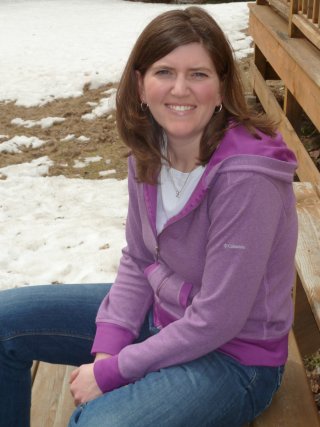
Anne Wiszowaty, North Shore Community School
Duluth, Minnesota
Anne Wiszowaty teaches second grade at North Shore Community School, a public charter school on forty acres in Duluth, Minnesota. Anne uses the environment as a teaching tool for all her subjects, from math to language arts to science to writing. She has spent a decade carefully developing curriculum that incorporates Minnesota-specific teaching standards with hands-on experiences on the forty acres of school grounds. Anne focuses on providing her students with educational learning opportunities that they can connect with. Her personal teaching philosophy is that learning is not limited to the four walls of a classroom.
Students need to realize that learning can take place anywhere! Students grow food in the greenhouse, compost scraps in worm bins, create a rainforest in their classroom, and even compete in a winter dog sledding race. Students and parents are also engaged in learning outside the classroom, through visits to state parks, local nature centers and collaboration with a local recycling plant. Anne enjoys sharing her experiences of the benefits of hands-on, outdoor education through trainings, workshops, and mentoring opportunities as well. Anne is a member of the Minnesota Association for Environmental Education and played a key role in her school’s successful Green Ribbon School Award application.
EPA Region 7
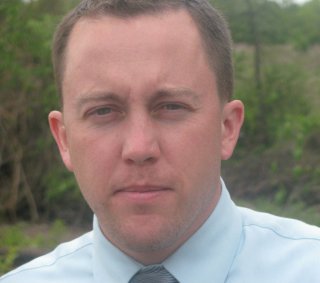
Mike Todd, Ames High School
Ames, Iowa
Mike Todd teaches environmental science, biology, and physics at Ames High School in Ames, Iowa. He is also a dedicated mentor for students in a variety of environmentally related and community based projects and clubs. He believes that it is of the utmost importance to get students involved inside and outside their school learning environment to engage with the wider community about local environmental and community topics and issues. He collaborates with scientists and professionals every year to help connect his students with real issues, scientific techniques and fields of study to create meaningful and community-based projects and learning experiences.
Mike’s students have helped conduct research and collect data for state agencies and university professionals for local water quality issues, monitored fish populations, conducted vegetation surveys and collaboratively planned and managed an outreach event to share their findings and help to educate members of the community about local water quality issues and potential solutions. His students focus their studies around a central environmentally based theme each year to create a platform for making connections across a broad range of subjects and provide space for many community interactions and support activities with projects.
Over the past few years, students have had the opportunity to participate in multi-year prairie reconstruction projects that help develop a deeper understanding of ecosystems, environmental science concepts and stewardship practices. Mike volunteers with many community groups and often integrates the projects of these groups, such as storm drain marking with the environmentally focused lessons to provide his students with practical experiences that have lasting impacts with their community. Mike strives to encourage his students to relate their projects to personal and career interests, network with professionals in those fields, and develop relevant skills and experiences that will be useful in the future, as they become informed citizens who make responsible choices.
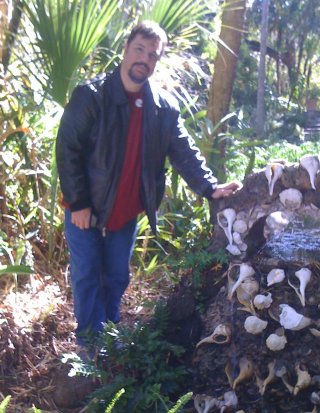
Dominick S. DeRosa, F.L. Schlagle High School
Kansas City, Kansas
Dominick DeRosa teaches a variety of science based subjects for high school students at F.L. Schlagle High School in Kansas City, Kansas. Mr. DeRosa has structured his curriculum and teaching methods to include educational opportunities that directly connect and increase students’ awareness and understanding of environmental interrelationships with societal impacts, health and help to promote responsible environmental stewardship practices.
A little over two years ago a small group of urban students, staff and parents joined with Mr. DeRosa to form an environmental team called Project Green. Project Green is a student led initiative, and includes participation from parents and staff, with Mr. DeRosa as a sponsor. From his Earth & Science classes, Project Green team set out to help reduce the school’s carbon footprint. The team has created a recycling program for the school and included ways to teach all members of the F.L. Schlagle community about how to reduce their carbon footprints. Project Green team also designed and created a student vegetable garden. The students work with their local community to learn about organic gardening tips and other gardening ideas community.
Currently in its second year, the garden has doubled in size and type of produce and the students plan to sell their produce at a farmers’ market and to local businesses. Project Green is also currently working to build a greenhouse to enable students to continue gardening through the winter months. Over the last two years, the Project Green team has been invited to speak at the Breaking the Silence conference and will be speaking at the KCEE conference about their work in the schools this summer. They hope to expand the program to the feeder middle & grade schools in the coming years. Mr. DeRosa exhibits tremendous dedication to promoting innovative learning and teaching practices through the integration of environmental and local topics and science that connect with a variety of subjects, including STEM initiatives and exceptional community involvement.
EPA Region 9
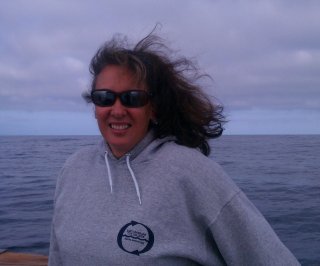
Dominique Evans-Bye, Clark Magnet High School
La Crescenta, California
Dominique Evans-Bye teaches biology and geographic information science at Clark Magnet High School in La Crescenta, California. Dominique has been a volunteer public safety diver for the Ventura County Sheriff’s Department since 1992. Combining grant funding and Sheriff’s funding, she was able to purchase a VideoRay remotely operated vehicle. The Marine Science Research course she teaches combines marine ecology, DNA barcoding and ROV operations with the fundamentals of GIS.
Through a Teacher-Initiated Inquiry Project grant from UCLA, Dominique led her team to develop a new science elective course, The Geology of Disasters. Following the Career Technical Education model from the University of California, the course combines rigorous academic instruction with the career orientated skills of GIS. For this course, Dominique sought training from FEMA and became a Hazus-MH Practitioner to teach risk assessment, loss estimation and loss mitigation strategies with Hazus-MH GIS software. For their capstone project, Dominique’s students work with city officials to keep the Local Hazards Mitigation Plan up to date using Hazus-MH software.
In connection to a variety of science studies, art and language art are also an integral part of Dominique’s environmental curriculum as she promotes a coastal art and poetry contest with her students each year. Her students also learn about cartography and digital arts that strengthen their technical, writing and design skills, as evidenced by recognized student success in previous scientific poster events. Dominique created Environmental GIS as a project-based learning course to give students the opportunity to take part in original research projects. To date, EnvGIS students have been awarded over $180,000 in scholarships and grants.
EPA Region 10
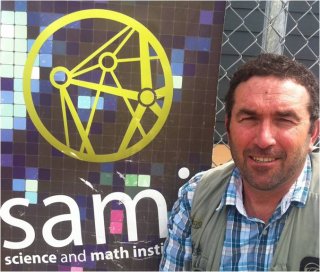
Ralph Harrison, Science and Math Institute
Tacoma, Washington
Ralph Harrison has been instrumental in creating a unique and innovative approach to high school environmental education, science and physical education at the Science and Math Institute (SAMi). He utilizes the outdoors, experiential, and place-based learning in all aspects of his curriculum. As a direct result of the Outdoor Education program developed and started by Ralph, many students continue participating in the environmental field through environmental, conservation, science activities and projects. He is very enthusiastic about extending environmental education beyond the classroom to actively demonstrate and teach about the natural world with his students.
Through his innovative teaching approaches, students learn to collect data for forest certification and participate annually in the “bio-blitz” inventory of the Point Definace Park area, as well as numerous scientific studies with local Universities and Point Defiance Zoo. Ralph was a member of the team of inaugurating educators who opened his district’s first STEM focused high school. Prior to that, he was one of ten teachers to open the groundbreaking and award-winning Tacoma School of the Arts. Through his interactive methods, students experience daily hikes while maintaining field notes and sketches of their observations and project based classes that are tailored to meet diverse learning needs. Ralph’s students learn environmental education through integrated work in science, natural histories, civic responsibility and connection with community that has a lasting impact and skill set that is carried into their future studies and endeavors.
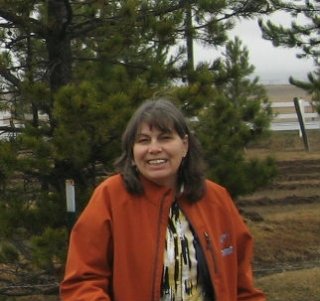
Lindsey Hoffman-Truxel, Barbara Morgan Elementary
McCall, Idaho
As a seasoned teacher with nearly twenty years of teaching experience, Lindsey Truxel is dedicated to place-based environmental education. She utilizes creative approaches to transform students’ lives and inspire learners. Collaborative teaching is an integral component of Lindsey’s approach as she teams up with community members to bolster discovery and understanding with her students. She has connected her students with experts in the fields of engineering, astronomy, biology, chemistry, as well as community leaders, Nez Perce National Forest employees, city workers, school board members and high school teachers to bring classroom activities to life.
She has been a member of the Environmental Advisory Committee (EAC) in her community for four years as well as a member of the newly established school district Green Committee. Lindsey is currently working with four government agencies on a special innovative project that teaches her students about invasive species of weeds and the nitrogen cycle. The Knapweed Project has allowed students to learn about botany, soil characteristics, and land stewardship. In addition, she has integrated the project into the areas of art, music, language, social studies and physical education.
The passion and drive she has for teaching is visible in all subjects, though she is especially devoted to math, science, technology and community-based, real-world projects. Through her efforts, students are sending data to NASA, studying fish and plants, and using microscopes and telescopes. She also brought Camp Invention to her school and has been able to share the funding, monitoring, and supervision opportunity with other teachers. Her dream is to see her school, Barbara Morgan Elementary, become a leader in science and math education. Lindsey strives to challenge her students and self to create a positive learning space that encourages lifelong learning and inspires curiosity.
2013 PIAEE Honorable Mention recipients:
1. Edmund Smith, Two Rivers Magnet Middle School, East Hartford, Connecticut
2. Courtney Leard, Fountaindale School for the Arts and Academic Excellence, Hagerstown, Maryland
3. Peter Mecca, George Mason High School, Falls Church, Virginia
4. Traci Knight Ingleright, Gwin Elementary School, Hoover, Alabama
5. Kathleen Ann Diggs King, General Ray Davis Middle School, Stockbridge, Georgia
6. Cheri Goggin, Berkshire Jr./ Sr. High School, Burton, Ohio
7. Keith Hannaman , Blue Springs South High School, Blue Springs, Missouri
8. Lucas Shivers, Bluejacket-Flint Elementary, Shawnee, Kansas
9. Dana Jenks, George Washington Carver, Sacramento, California
2011-2012 Winners
EPA Region 1
Lizanne “Liz” Cox, Common Ground High School
New Haven, Connecticut
From the time she arrived at Common Ground High School in 1999, Liz Cox has demonstrated that the local environment can be a powerful context for challenging, authentic and meaningful learning. Founded in 1998, Common Ground High School is a charter school in an urban environment that serves a diverse student body. As a teacher and school leader, Liz has promoted environmental learning to break down barriers between the school and the community. Liz helped develop new courses that focused on using Common Ground's urban farm as a laboratory for exploring food issues and student relationships with urban neighborhoods.
Based on a hands-on learning approach, these courses actively engage students on issues most relevant to low-income, minority students, such as environmental justice, food security and educational equity. Liz also formed a team to assess student learning, implement improvement strategies, measure impacts related to environmental learning and leadership, and create a school-wide environmental leadership benchmark assessment. She has demonstrated that environmental issues, and the urban environment in particular, are a powerful tool for interdisciplinary learning and have a role in every subject area. Liz’s work has helped produce dramatic educational results, including students who surpassed the 2011 state average in math, reading and writing for the first time in the school’s history.
Ed Lindsey, Old Town High School
Old Town, Maine

While teaching chemistry and earth science at Old Town High School, Ed Lindsey also participates in Acadia Learning, a partnership that provides professional development and scientific support to teachers who are conducting inquiry-based studies of mercury in ecosystems across New England. One year after he joined Acadia Learning, Ed developed a hands-on environmental chemistry course at Old Town to teach about mercury, core chemistry concepts and the usefulness of dragonfly larvae as sentinels for mercury in fresh water. The students go on field expeditions to search for dragonfly larvae, delineate the watersheds involved in the study and calculate how mercury affects their watershed each year. Students use their own data to develop conclusions and present their results at a student poster symposium attended by scientists and resource managers.
Ed’s class engages his students in authentic research and provides many students their only opportunity to work outdoors in a natural laboratory. He also has led a group of high school teachers in an effort to redesign and coordinate earth science curricula across schools in five towns. His commitment to environmental science includes continuous coordination to find funding and collaborate with researchers, local experts and community organizations.
EPA Region 2
Patricia Lockhart, The Hubert Humphrey School PS 57
Staten Island, New York

Patricia Lockhart has developed an eclectic science curriculum that engages students in hands-on outdoor environmental education projects at the Hubert Humphrey School, a Title I school located in Staten Island, New York. The majority of her projects are conducted in school gardens and at nearby Eibs Pond Park, where she has initiated programs to address local environmental and health concerns, including airborne toxins, asthma and childhood obesity.
Patricia created a healthy children’s garden at the school for students to grow their own fruit and vegetables and a butterfly and bee garden to attract pollinators and help students learn about plant and insect life. Her students make presentations to the school, community and elected officials, and consistently score between 60 and 70 percent above grade level on the fourth-grade state science tests.
She has successfully integrated environmental education into the broader school curriculum, including art, math, social studies and language arts. Patricia also runs Robotics and Watershed programs for upper-grade level students and the Junior Ranger Science Club at the YMCA. As a result of her efforts, the Hubert Humphrey School has received numerous awards and grants and has been recognized on the news for its effective environmental education programs.
Aaron Baker, Randolph High School
Randolph, New Jersey
By following a curriculum that features hands-on projects and field experiences, Aaron Baker provides his students opportunities to understand how their actions affect the environment. Aaron revived the AP Environmental Science at Randolph High School, which had been inactive due to low enrollment. He teaches students about waste management, greenhouse gases and alternative energy sources through innovative activities such as making biogas generators out of bottles, balloons and manure to produce and capture methane. Students build solar ovens to learn about passive solar energy and the environmental and social consequences of fuel wood collection. They also build miniature waste management facilities with leachate collection systems to analyze decomposition rates and pollution levels of leachate.
Aaron leads his class in field excursions to a local forest to sample pollution levels in a nearby stream, inspect tree density and distribution, and measure secondary succession rates. They take day-long field trips, including trips to the Science Education at Sea program in Cape May, New Jersey, where students learn about wetland conservation, plankton sampling, and fish and invertebrate sampling and identification. Through these experiences, Aaron’s students leave his class with an increased awareness and knowledge to enable them to make positive contributions to sustainability and the environment.
EPA Region 3
Robert Carroll, Plaza Middle School
Virginia Beach, Virginia

In only 5 years of teaching at Plaza Middle School, Robert Carroll has dramatically transformed environmental education by creating a host of innovative school-based projects that use the environment as a context for learning, including oyster restoration, classroom estuaries, composting, organic gardening and a tree nursery. He maintains 10,000 oysters at a local tributary site and transports them to the school for teachers to conduct oyster monitoring laboratories with their classes. Students test water quality, generate authentic data and actively contribute to restoration of the Chesapeake Bay.
He organized a composting project that reduces the school’s waste stream by converting garbage into fertile soil that is used in the school’s organic garden. Produce grown by students is donated to local homeless shelters. Robert’s unique projects have turned the school courtyard into an on-site environmental field trip center for students. The courtyard is used as a tree nursery that is applied to teach photosynthesis, the scientific method and data management. The trees are watered with a 450-gallon rainwater collection system that Robert envisioned and contracted with grant funding. Plaza Middle School serves a racially and economically diverse student body, and Robert’s students have dramatically improved test scores on the science Standards of Learning.
Rebecca Sanders, Crellin Elementary School
Oakland, Maryland

After her fifth-grade class found acid mine drainage seeping into Snowy Creek behind Crellin Elementary School, Rebecca Sanders took the opportunity to teach her students innovative problem solving and environmental science. She helped transform the site into an environmental education laboratory, and the Crellin Corps of Discovery was formed.
Rebecca developed environmental education lessons that incorporated components of the site, including wetlands, treatment ponds, a vernal pool, native gardens and the restored riparian area. She uses Snowy Creek and the surrounding ecosystems to engage students in scientific processes, such as exploration, observation, classification and prediction. Her students have worked with a local watershed association and state agency to monitor Snowy Creek by surveying benthic macroinvertebrates, a key indicator of stream health.
Rebecca’s students gain confidence by presenting their learning and ideas to community groups, and they learn that they have the potential to improve their community and become life-long stewards of the environment. Her cross-curricular lesson plans also encourage other teachers to integrate environmental studies into their curriculum.
EPA Region 4
Frank McKay, Exploris Middle School
Raleigh, North Carolina

Located in downtown Raleigh, Exploris Middle School is an urban charter school with no school grounds or outdoor learning spaces. For the past decade, science teacher Frank McKay has developed innovative ways to connect students to the natural world through a combination of project-based learning, community partnerships and service learning. He inspires students to be informed, active citizens who implement positive change in their community by integrating science, social studies and language arts into quarterly “themes” that are anchored in local and global environmental issues.
For example, students study water by visiting the source of their drinking water, canoeing the Neuse River to study the effects of runoff and analyzing the health of local streams. He has established a strong network of dozens of community organizations with local experts to help students learn through field experiences. Students also engage underserved communities directly through projects with the Walnut Creek Wetland Center and Partners for Environmental Justice.
Collaborating with community and national partners, Frank created the Neuse Riverkeeper Foundation Environmental Challenge, which provides opportunities for teachers and students to participate in place-based environmental service-learning centered on North Carolina’s state teaching standards. Frank’s students connect with nature and contribute meaningfully to their community while building strong environmental literacy skills by understanding how environmental issues impact public health, the economy and shared resources.
Deborah “Deb” Wasylik, Dr. Phillips High School
Orlando, Florida

For 10 years, Deb Wasylik has taught environmentally oriented classes at Dr. Phillips High School, an urban school of 3,600 students serving primarily minority and low-income students. Deb’s classes incorporate hands-on activities, challenging laboratories and other innovative teaching methods. She draws students into the world of environmental science through her “meet the scientist” program, when she invites science researchers into the classroom to help students better understand what they are learning in school and to excite them about the field of science research.
She co-sponsors the school’s Eco-Action Team, which performs campus cleanups and partners with the City of Orlando and the Ocean Conservancy to clean up Lake Fran. She also helped the students work with the Universal Foundation to secure a grant that provided the school with 60 recycling bins and initiate a campus-wide recycling program. Deb also works with several department members to develop curricula with direct connections to environmental education.
She encourages her students to find the issues they are passionate about and to continue to pursue them after they graduate so that they continue to make a difference. She has been recognized by several prominent organizations for her efforts, including the Christopher Columbus Life Science Educator Award, recognizing her as one of the top teachers in the United States.
EPA Region 5
Howard Hill, Highland Park High School
Highland Park, Illinois
Howard Hill introduces students to outside learning, investigation and research from the first day of class, inspiring them to learn and think analytically. Howard’s students have designed and built a biodiesel laboratory that converts the cafeteria’s vegetable oil into fuel to power a generator used for concession stands at athletic events. They also have transformed an unused courtyard into a living laboratory. Students learned about building ordinances, wind power dynamics and the physics of electricity as they worked with school administrators, the school board and contractors to install a wind turbine that feeds power into the school’s grid.
His students coordinate recycling efforts, wetland restoration projects, community education programs and environmental outreach programs to local elementary schools. Howard promotes independent research, which allows students from different backgrounds the opportunity to choose a topic of study with cultural and personal relevance. While serving on Highland Park’s Environmental Commission, he developed a program to bring student representation onto the commission. The student position rotates through graduating seniors and introduces them to the politics of environmental issues. As a member of the school’s steering committee, he has helped to design the objectives and teaching goals of various departments and align them with specific state teaching standards. Howard’s teaching has instilled his students with enthusiasm, knowledge and passion for the environment, and empowered them to make a difference in the world.
Sandra Vander Velden, Fox River Academy
Appleton, Wisconsin
As the co-founder and lead teacher at Fox River Academy, Sandra Vander Velden promotes use of an integrated curriculum to teach core subject areas by focusing on the environmental, historical, cultural and economic importance of the Fox River. Each week, in partnership with a field biologist, Sandra leads students in local land restoration projects that complement rigorous inquiry learning projects conducted in the classroom. Her students are currently converting Pierce Park, a former trash dump, into an outdoor learning classroom. They are clearing undesirable tree species, constructing benches and bird houses, and developing plans to create a trail with interpretive signs.
Sandra uses these projects to guide students in the application of academic skills to make positive changes to their environment. Sandra also serves as the coordinator for several annual school-wide and community events, such as a rain barrel demonstration project, storm drain stenciling and stream monitoring. She is the coordinator of the Jefferson/Fox River Academy Community Garden Project, which enables students to learn about plant growth and sustainability issues related to community gardening. Sandra also provides students with leadership opportunities by encouraging them to give tours of the school and field sites, offering community presentations, and writing a quarterly newsletter.
EPA Region 6
Clifford “Cliff” Strain, Flour Bluff Independent School Distric
Corpus Christi, Texas

As a fifth and sixth grade teacher in the Flour Bluff Independent School District, Cliff Strain has gone beyond the classroom to increase student and teacher interest in the local marine environment. His students work in the laboratory and in the field to explore how oceanographers measure tides, currents, salinity and water quality. At the school district’s 47-acre wetland, students are taught how to collect samples, understand food webs, test water quality and identify human impact. Cliff has worked with district personnel to develop a learning center and trails, creating opportunities to engage the whole community in activities that protect the wetland.
Throughout 15 years of teaching graduate courses at Texas A&M University – Corpus Christi (TAMU-CC), he worked with teachers in low-income areas to develop partnerships with local industries that support environmental education. In the summers of 2009 and 2011, he conducted a field-based environmental science camp for local children in Kaktovik, an Inupiat village of 250 people located on the Arctic coast of Alaska. He also served on a 5-year planning committee at TAMU-CC to build a math and science center to enhance teachers’ skills in science and math. For more than 21 years, Cliff has used a hands-on approach to encourage students and the members of the community to respect and understand the local environment.
Bradd Schulke, East Mountain High School
Sandia Park, New Mexico
Twelve years ago, Bradd Schulke began teaching environmental science at East Mountain High School with a desire to encourage students to tackle real-world problems though hands-on approaches. One of his first accomplishments was to secure funding to construct a passive solar building on campus, named the East Mountain Center for Environmental Studies. He actively involved the community, gathered support from environmental organizations, and included his students in the design and construction of the center. He also secured funding for his students to conduct plant and animal surveys and water quality monitoring of an acequia in San Antonito that supplies drinking water to members of the local community.
Collaborating with another teacher, Bradd developed the concept of the Junior Research Project at the school, which requires every student to research a topic of global concern, identify a community mentor, complete a hands-on project connected to the topic, and present the results to the school community and the public. This innovative approach teaches many important skills, including inventive thinking, interactive communication, and social and personal skills. Bradd also has spent his summers leading a crew of youth conservation corps workers at Wildlife West Nature Park and has served as the president of the Intermountain Conservation Trust for 5 years. Bradd’s approach to environmental education demonstrates to students that individual action can make a difference, even when issues on a national or global scale are involved.
EPA Region 7
Denise Scribner, Eisenhower High School
Goddard, Kansas

For more than 30 years, Denise Scribner has taught environmental concepts to young learners of all abilities. Her lessons focus on developing an awareness and knowledge of environmental issues, practicing leadership skills, and making a commitment to act responsively toward the environment. While they were conducting field investigations of the aquatic pond at nearby Goddard High School’s Outdoor Wildlife Learning site, her ecology students learned that the pond was not providing sufficient oxygen for the aquatic species it supports. Denise used this information as an opportunity to guide her class in real-world problem solving to develop a solution: the school won a grant to harvest wind energy to aerate the pond.
She also obtained grant funds to finance student efforts to reseed native grasses and develop interpretive nature trails for the Outdoor Wildlife Learning site. Each year, students participate in a “Celebrate Earth” event, during which they develop and lead 25 hands-on activities and five classroom laboratories for third through fifth grade students. Denise invites consultants and volunteers from the local community, county and state to visit her classroom to teach students about issues such as hazardous waste, energy conservation and land management. Outside of the classroom, Denise is involved in the Kansas for Children Nature project and other local initiatives, and she has served on the Kansas Association of Conservation and Environmental Educators to develop an environmental literacy plan for the State of Kansas.
EPA Region 8
John Broda, Buffalo Ridge Elementary
Cheyenne, Wyoming

“Dirty learning” is how John Broda describes his teaching philosophy to his students at Buffalo Ridge Elementary. The school year begins with six trips to a local state forest, where students learn about tree identification, Rocky Mountain pine beetles, water quality testing and insect classification. Students collect data on a section of trees, use global positioning systems and laptops to record data, and upload the information to analyze patterns on the Rocky Mountain pine beetle and their effects. John’s students also take a trip to Yellowstone National Park, where he incorporates elements of reading, writing, science and social studies through hands-on activities, journal writing and problem solving. The trip also includes a stop at the Buffalo Bill Historic Center’s Draper Museum, where students learn about various environments that are unique to the Rocky Mountains.
Students also visit the Northwest Community College Field Station, where experts facilitate outdoor workshops for student groups and discuss topics related to wildlife, forestry and horticulture. John helped work with the school Parent Teacher Organization to begin the Save the Planet Club. Save the Planet Club members collect and recycle paper and distribute energy efficient light bulbs at school events to promote energy conservation. John’s recycling efforts developed into a pilot program with the City of Cheyenne to install a recycling dumpster on school grounds.
Sally High, Pagosa Springs Middle School
Pagosa Springs, Colorado

As a social studies teacher at Pagosa Springs Middle School, Sally High instructs students about the relationship between the environment and global issues. She teaches various “challenge classes” at the school, including “Clean Energy and Sustainability,” when students conduct an energy audit of the school and develop a plan to conserve and reduce school energy use. As part of the “Greenhouse Gardening and Sustainability” challenge class, Sally teaches students about sustainable food production and takes them on a field trip to a water treatment plant, where they learn about the importance of water resources.
She is part of a team of teachers that takes seventh graders on an outdoor excursion and camping trip to Bandelier National Monument in New Mexico to learn about history, physical geography, and flora and fauna. She sponsors the seventh and eighth grade Leadership Team, which has helped to clean the campus and local neighborhood, plant trees and maintain flower beds, and advocate recycling.
Sally also is coaching three Destination ImagiNation teams, a co-curricular academic competition that promotes teamwork, problem solving, creative skills and scientific research as the students strive to build a solar prototype. Through inquiry-based learning and student-directed research projects, students improve their understanding of how their rural community is linked to the global environment. Sally also serves on the board of the Geothermal Greenhouse Partnership, which endeavors to build dome greenhouses and community gardens.
EPA Region 9
Riccardo Magni, Pioneer Valley High School
Santa Maria, California

During the 2008-2009 school year, Riccardo Magni was tasked by the principal at Pioneer Valley High School to reinvigorate an advanced environmental science class that had low enrollment. With the help of grant funding, Riccardo purchased Probeware and Labquest devices and organized students to begin monthly testing of a local pond at Jim May Park. Students test the water for environmental factors such as turbidity, nitrates and dissolved oxygen; analyze the data; and share results with a local elementary school to teach and inspire younger students about the environment.
Riccardo leads field trips to the Avila Sea Life Center, where students participate in a workshop, collect ocean water samples and study sea life. He conducts ecological nature walks to provide students with opportunities to observe, classify and predict the species living on campus. He also has invited dozens of industry professionals to talk to students and expose them to real-life applications of environmental science.
He recently founded the Summer Science Research Institute, a 6-week summer program during which students have built a wind turbine and a wave energy device to extract energy from the ocean. Riccardo has instilled excitement in science classes at Pioneer Valley High School and has been approached by other science teachers in his school district seeking help to start similar programs.
EPA Region 10
Mike Town, Redmond High School
Redmond, Washington
In the late 1990s, Mike Town became one of the first teachers in the United States to teach Advanced Placement (AP) Environmental Science and has since taught the course to more than 2,000 students. A few years ago, he developed a Career and Technology Education-certified course in Environmental Engineering and Sustainable Design that focuses on teaching green job skills, including green construction, alternative energy, transportation design and urban planning. Mike uses innovative projects as part of his curriculum to increase environmental literacy.
For example, in coordination with the Redmond Parks Department, Mike’s students embarked on a project to map and calculate the acreage of several different ecosystems and measure the ecological services of the largest parks in the city. They then calculated the economic value to society from 23 ecological services, including carbon storage, water retention and nitrogen formation. Mike has developed a number of innovative national curriculum projects that are available to teachers for free, including the Cool School Challenge (CSC), where students measure and reduce the carbon footprint of their schools by auditing the energy use of each classroom.
The CSC energy auditing curriculum has been used in hundreds of schools across the world, resulting in the abatement of millions of pounds of carbon dioxide. Mike continues to advance the field of environmental education and has conducted professional development workshops for teachers at numerous conferences, including the National Science Teachers Association and the Environmental Educators Association of Washington.
Deirdre Bingaman, Donnelly Elementary School
Donnelly, Idaho

By focusing her environmental education projects on real-life community issues, Deirdre Bingaman helps her students recognize the value of their local environment. She partners with area professionals, providing her students with the opportunity to learn in a collaborative setting outside of the traditional classroom. Deirdre began the inquiry-based Boulder Creek Project in 2008 after learning that Boulder Creek, which runs alongside Donnelly Elementary School, was listed as water quality impaired on the Idaho Integrated Report.
Each year, her fifth grade class compiles water quality data and uses the scientific method to investigate a question they selected. Students present the final results of their project to the Donnelly City Council and community members. Deirdre’s students routinely collect and quantify the amount of paper recycled at the school, and convert that amount into the amount of trees and energy saved. They are currently participating in an effort to invite all of the elementary schools in Idaho to participate in this program, and requesting that they enter their results online to determine the amount of trees and energy saves state-wide. Deirdre also shares her expertise with other educators through presentations at educational conferences and published journal articles.
2012 PIAEE Honorable Mention recipients:
- Jeannie Kornfield, Hanover High School, Hanover, New Hampshire
- James Hefti, Pulaski Middle-Senior High School, Pulaski, New York
- Alan Fiero, Farnsworth Middle School, Guilderland, New York
- Gina Mason, Palmyra Area School District, Palmyra, Pennsylvania
- Diane Parton, Warren County Schools, Warren County, Tennessee
- Doug Anderson, Williamson County Schools, Williamson County, Tennessee
- Lisa del Muro, Wheeling High School, Wheeling, Illinois
- Patrick Arndt, Berlin High School, Berlin, Wisconsin
- Holly Anderson, Coppell High School, Coppell, Texas
- Rachel Bossier, Fairfield Junior High School, Fairfield, Texas
- Kathleen O'Brien, Derby High School, Derby, Kansas
- Mark McKay, Venture Academy-Delta Vista High School, Byron, California
- Susan Milan, South Whidbey Elementary School, Langley, Washington
